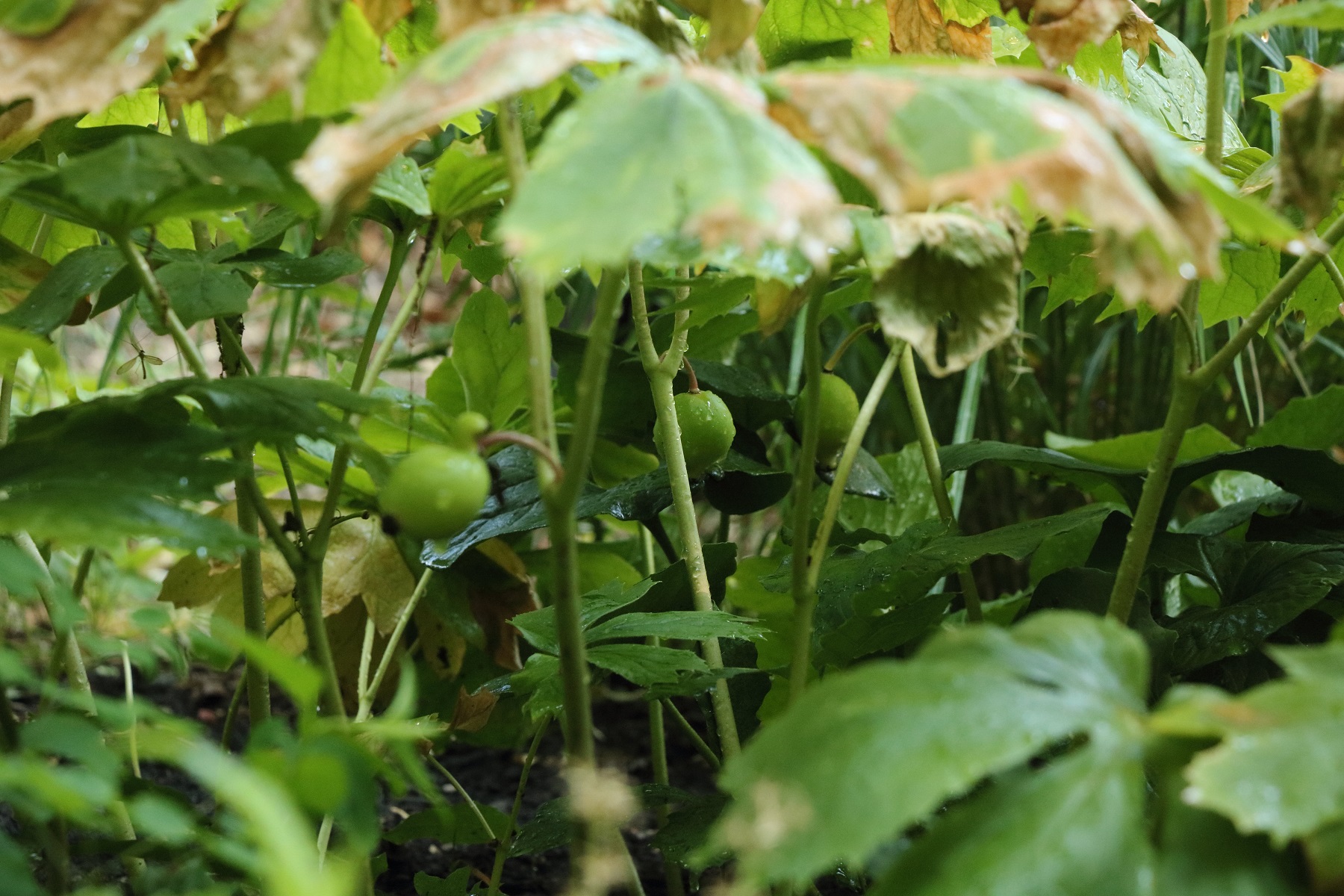GARDENING IN HARMONY WITH NATURE IN THE NORTHEAST
Spring Ephemerals

Dutchman’s Breeches.
A great many species of Spring Ephemerals are native to the eastern deciduous forest. In the wild, most have declined precipitously due to loss of habitat, overgrazing by white-tailed deer, and unlawful collection. There is even evidence that the introduction of earthworms by the early settlers from Europe is detrimental to them: Earthworms change the soil by decomposing leaf-litter much faster than usual for the native forests in which the Spring Ephemerals have evolved. They may even eat the tiny seeds of Ephemerals like Dutchman’s Breeches.
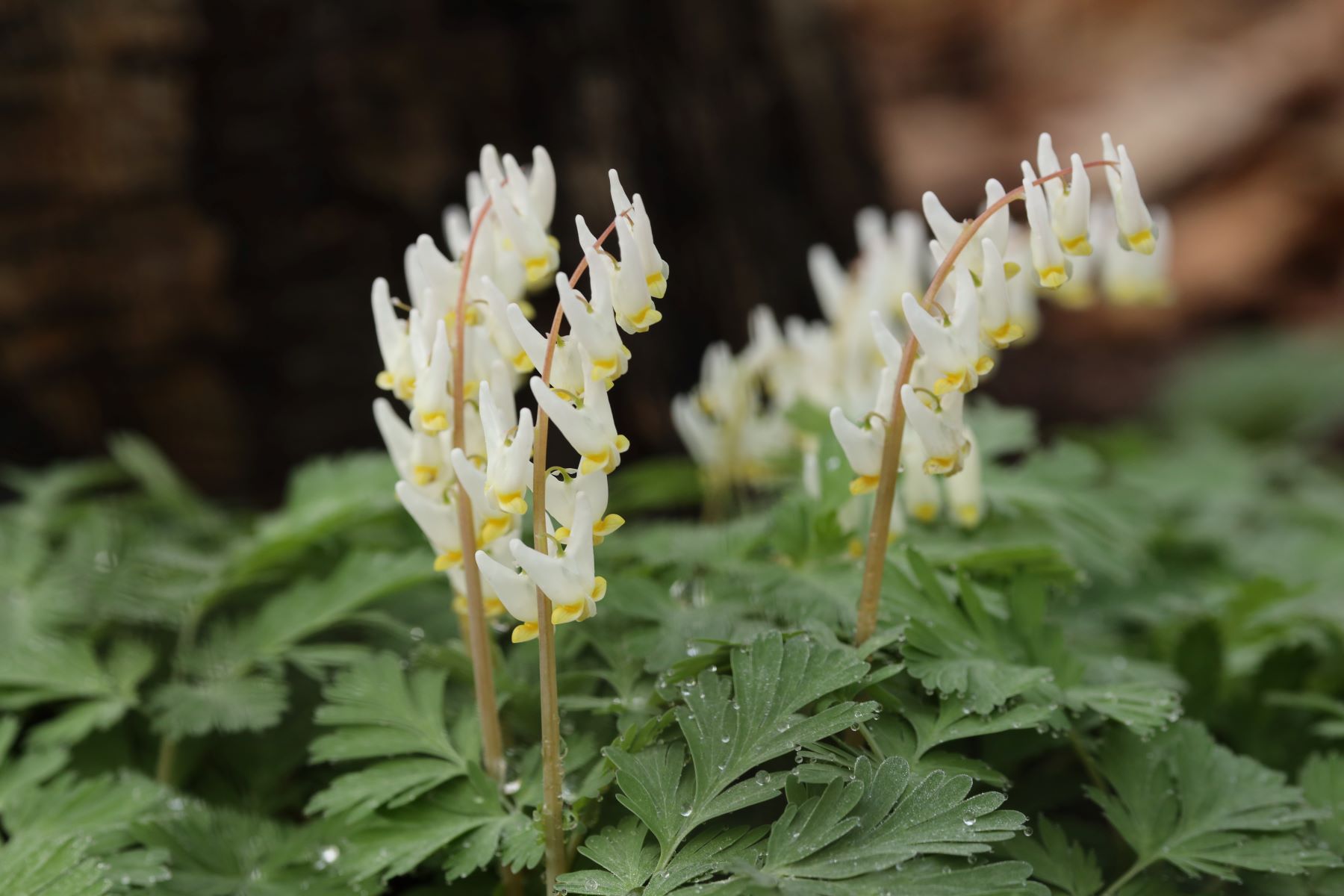
Even though true Spring Ephemerals completely retreat underground by June, we are taking the freedom to include some borderline Spring Ephemerals here such as Bloodroot, Mayapple or Bellwort, where the leaves may linger a bit longer. These species can form very nice late-spring / early-summer groundcovers on the forest floor.
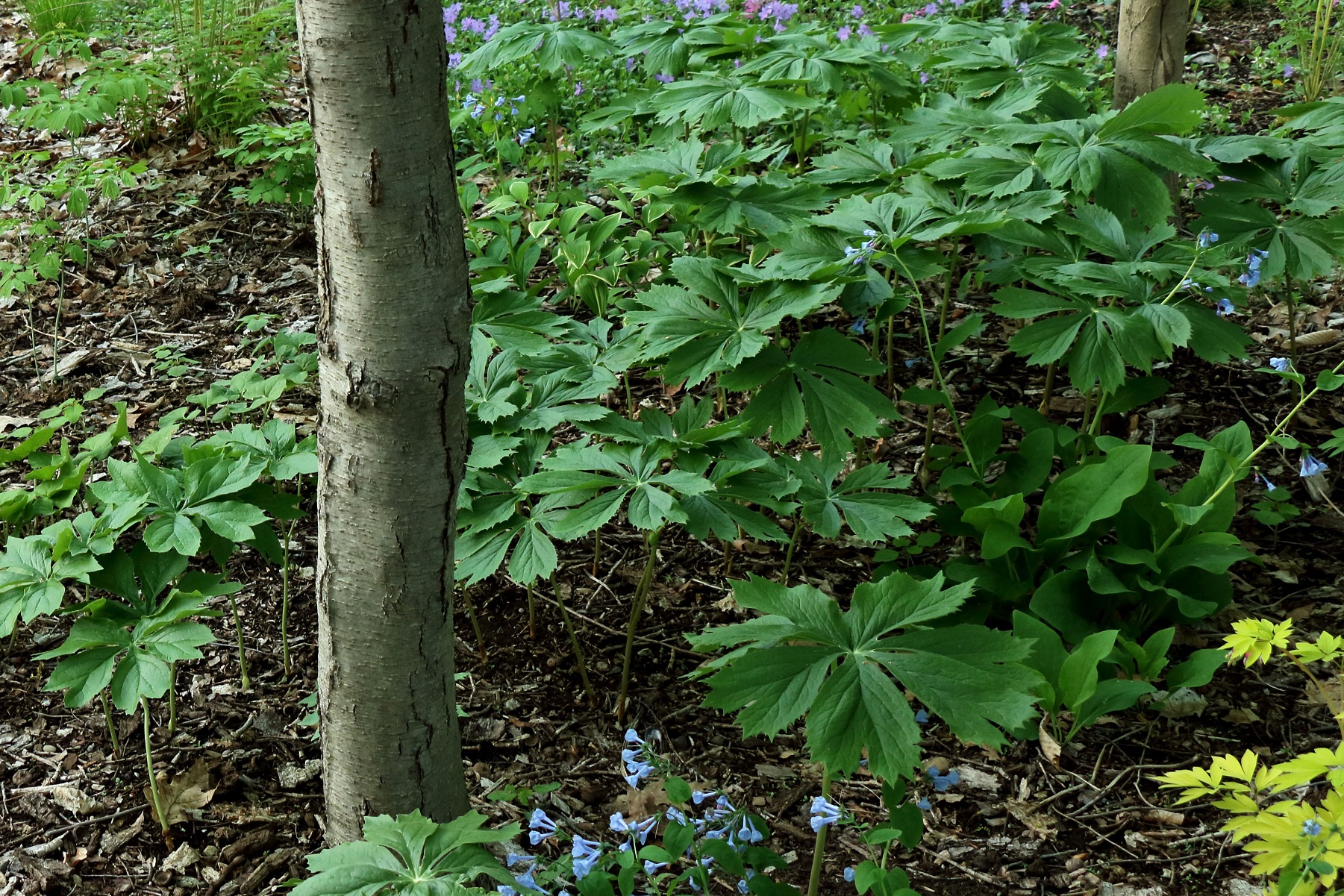
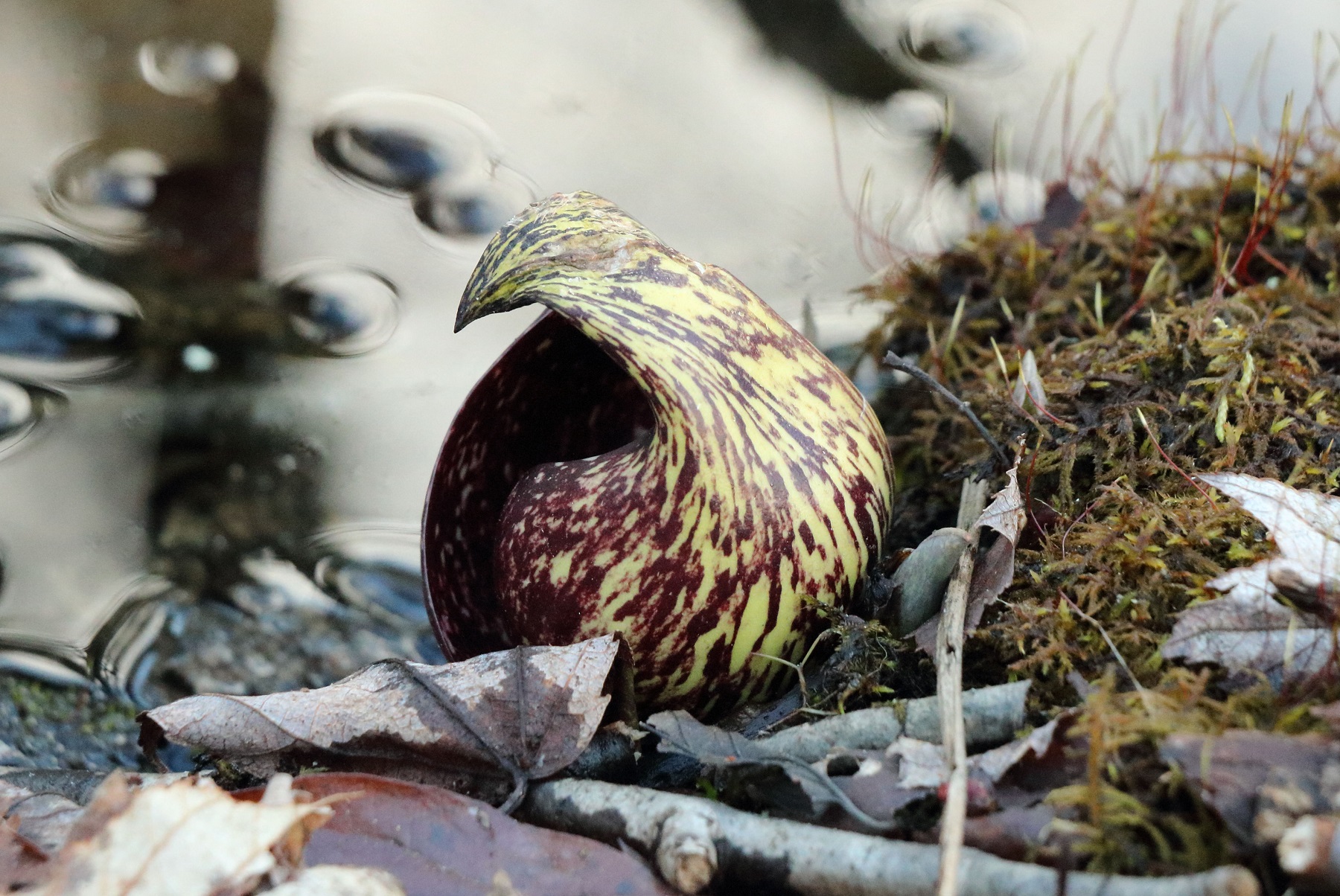
(Skunk Cabbage) - Flower

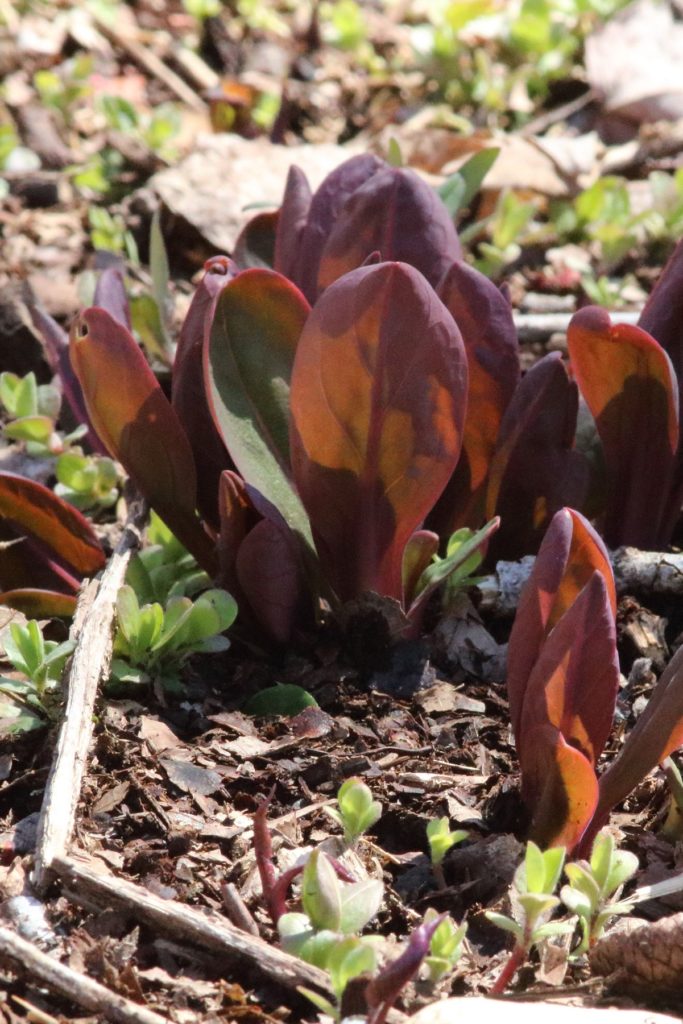
(Virginia Bluebells)
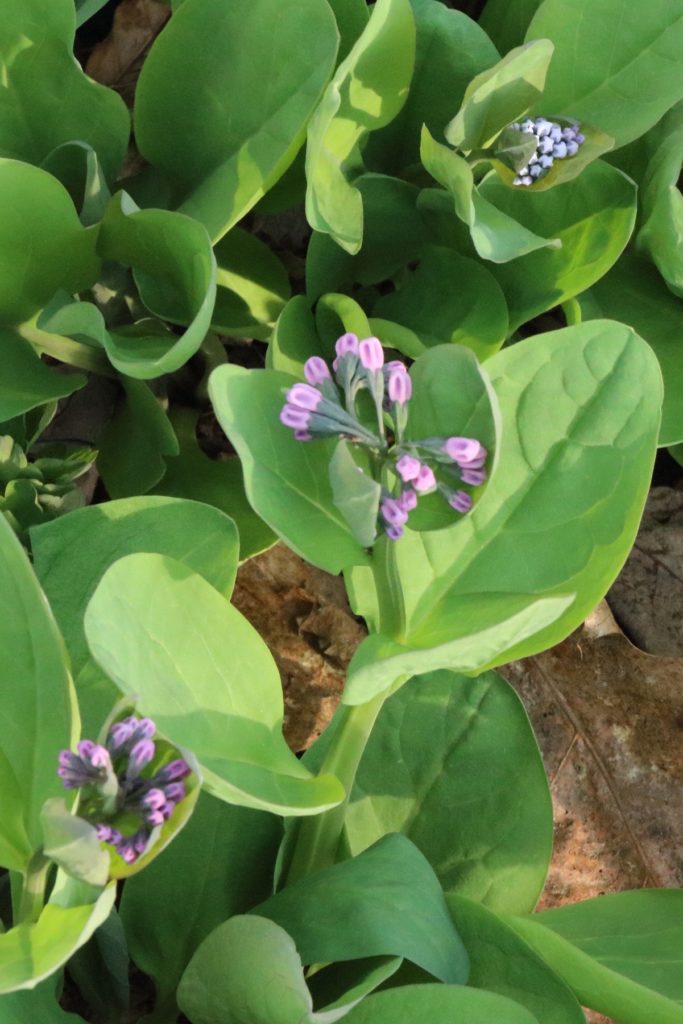
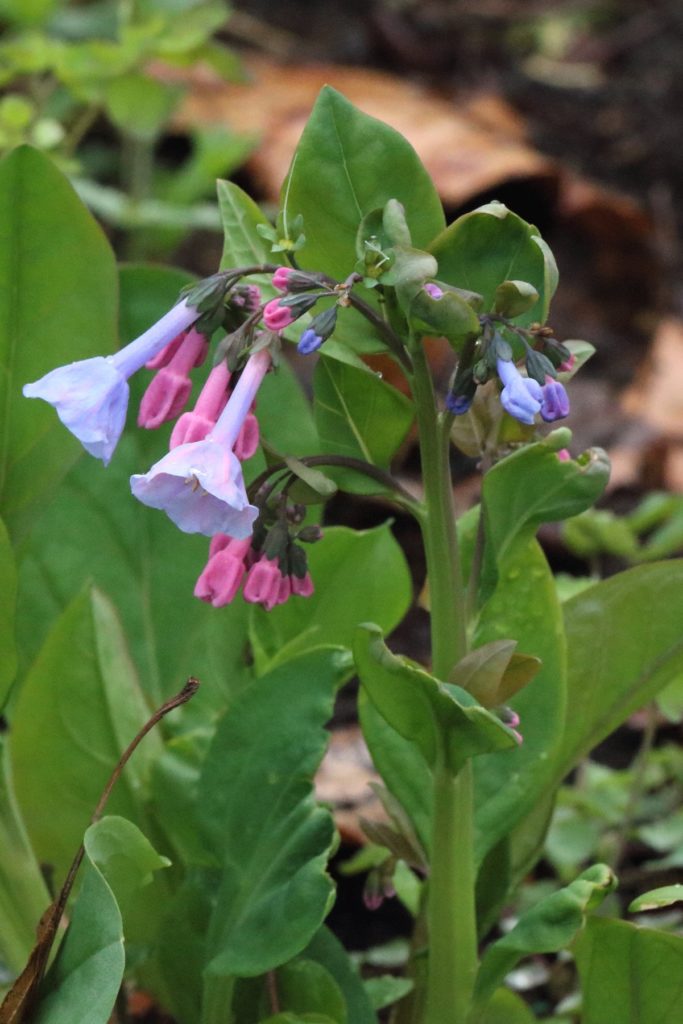
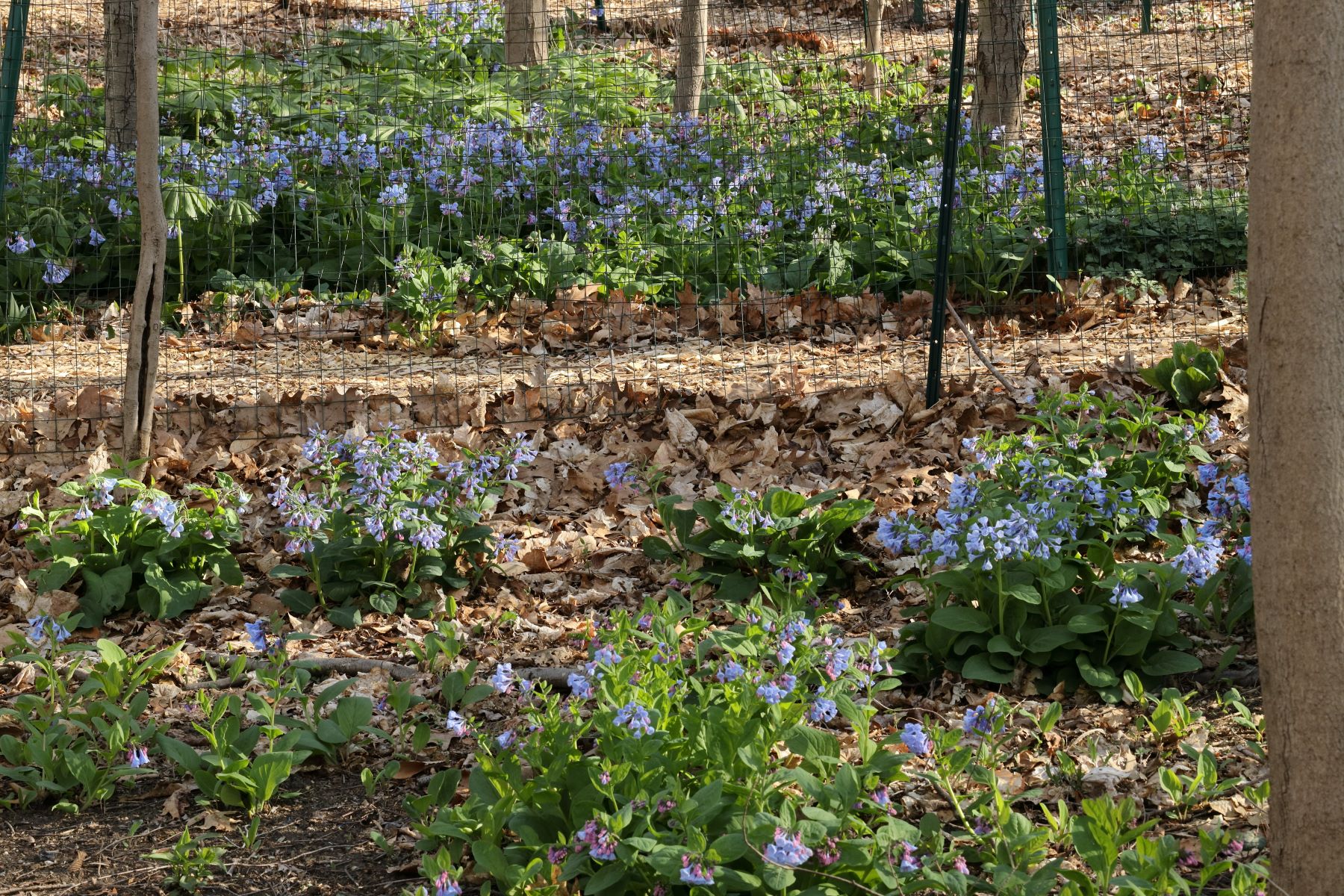


(Wood Anemone)
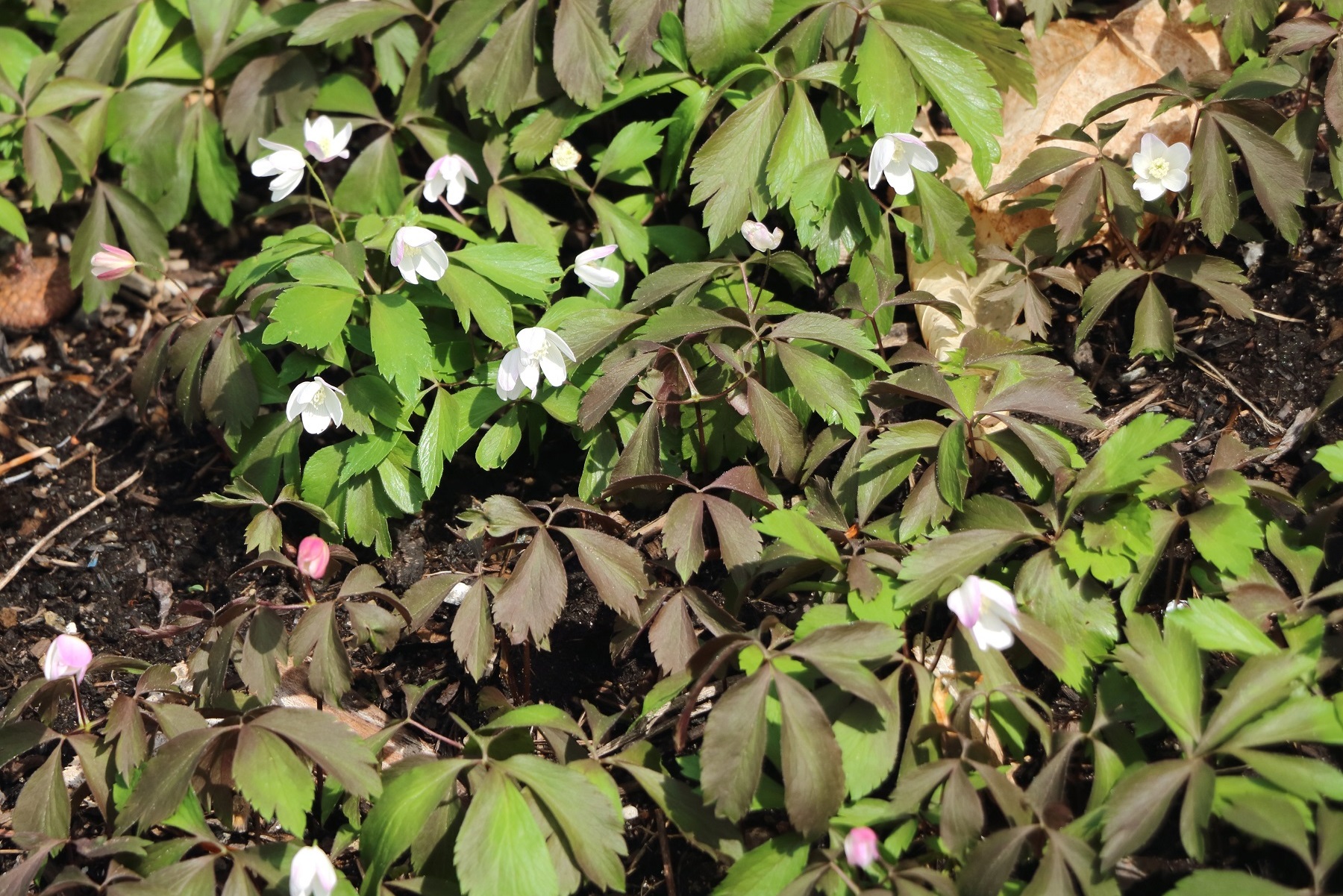

(Rue Anemone)
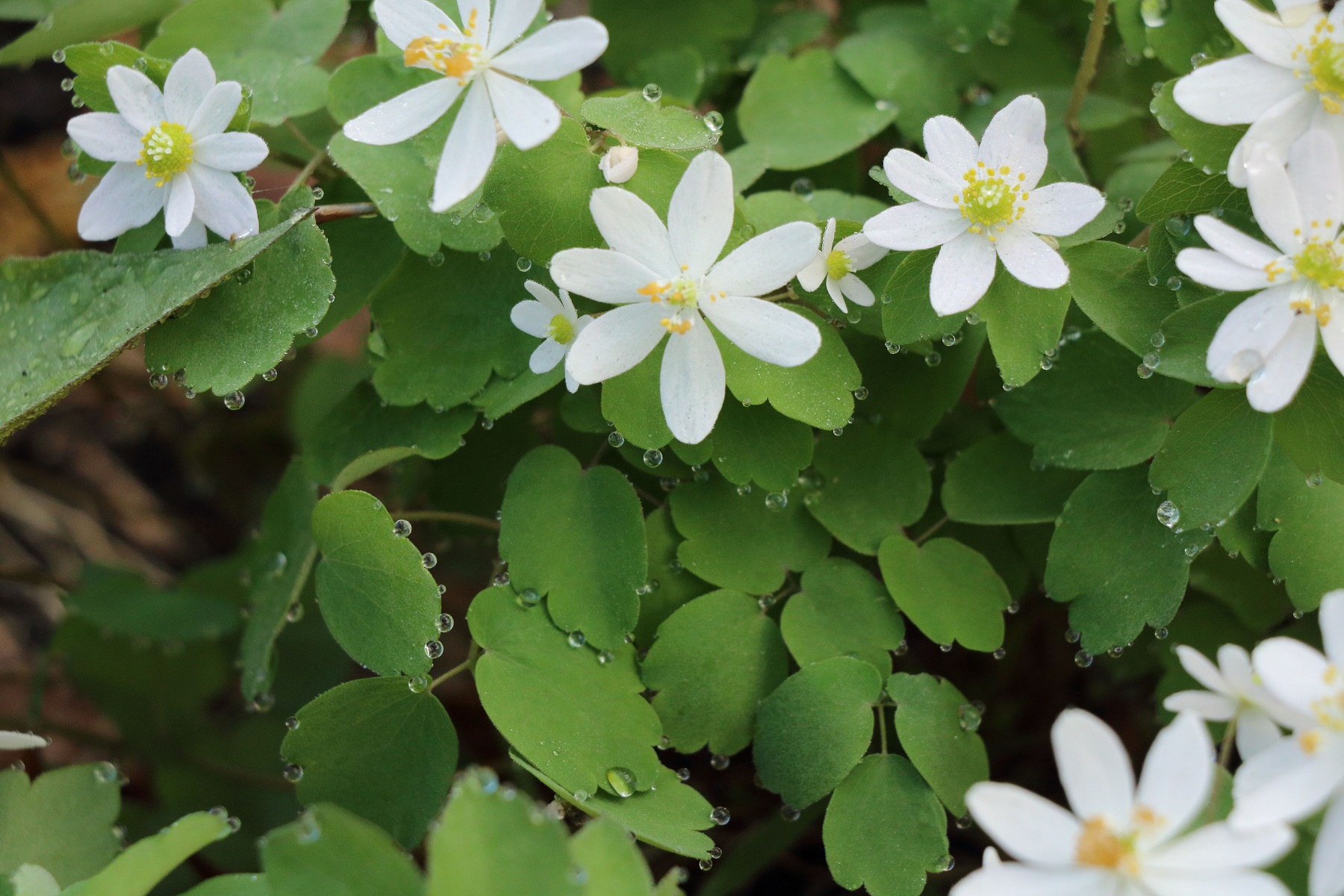
Rue Anemone pink variety and double-flowering cultivar ‘Cameo’
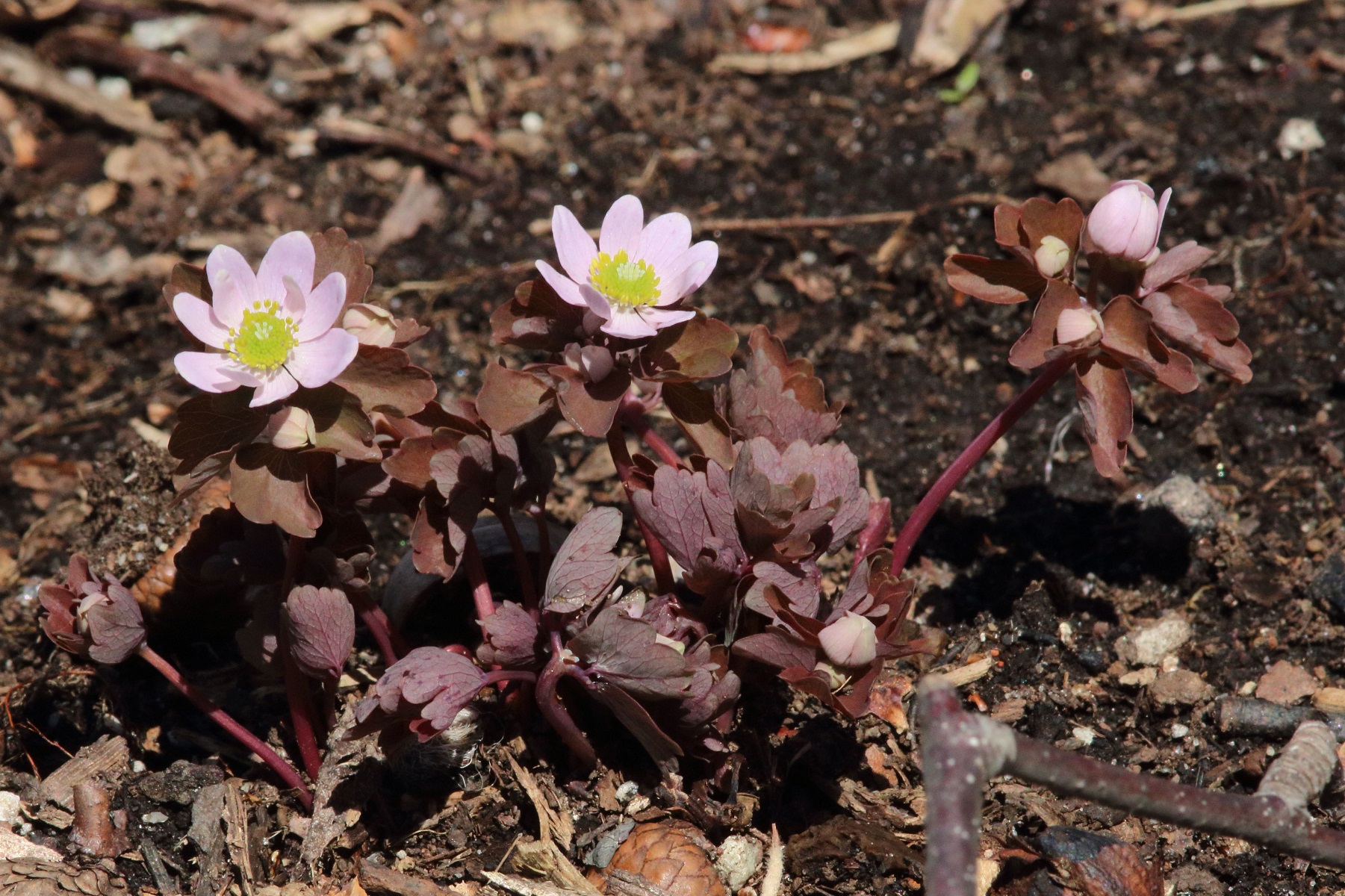
(Rue Anemone) pink variety
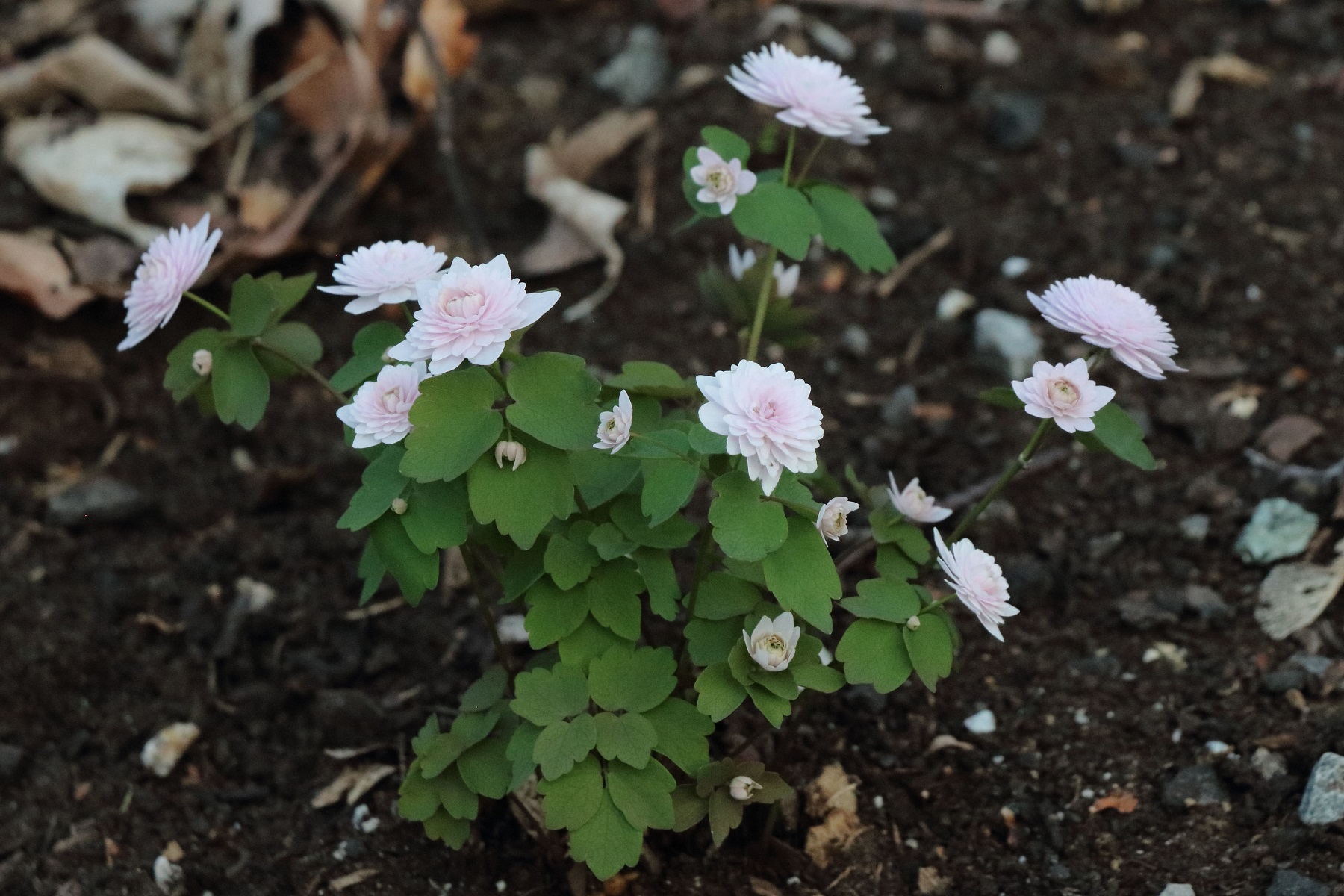
(Rue Anemone) 'Cameo'

(Sharp-Lobed Hepatica)
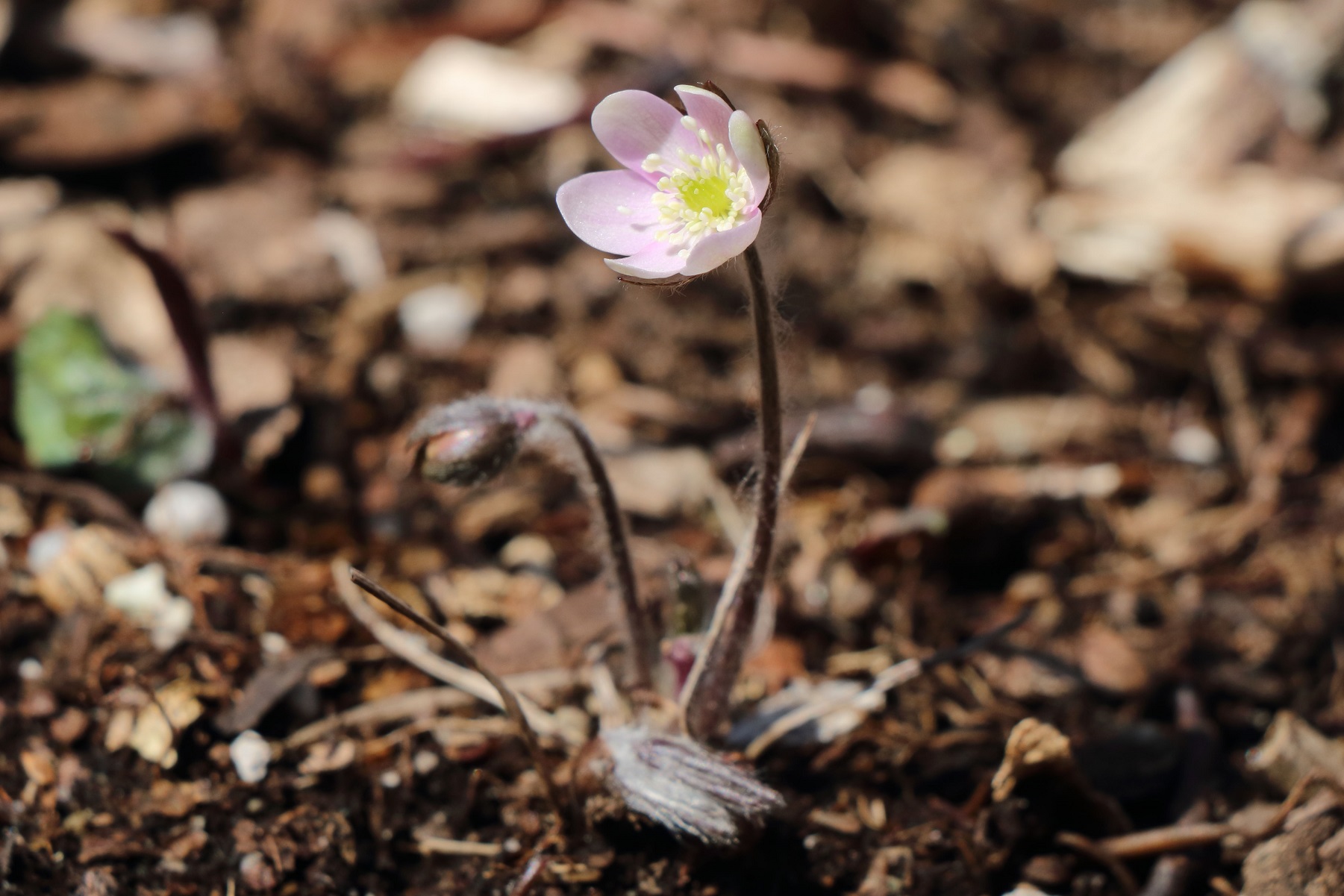
(Sharp-Lobed Hepatica)
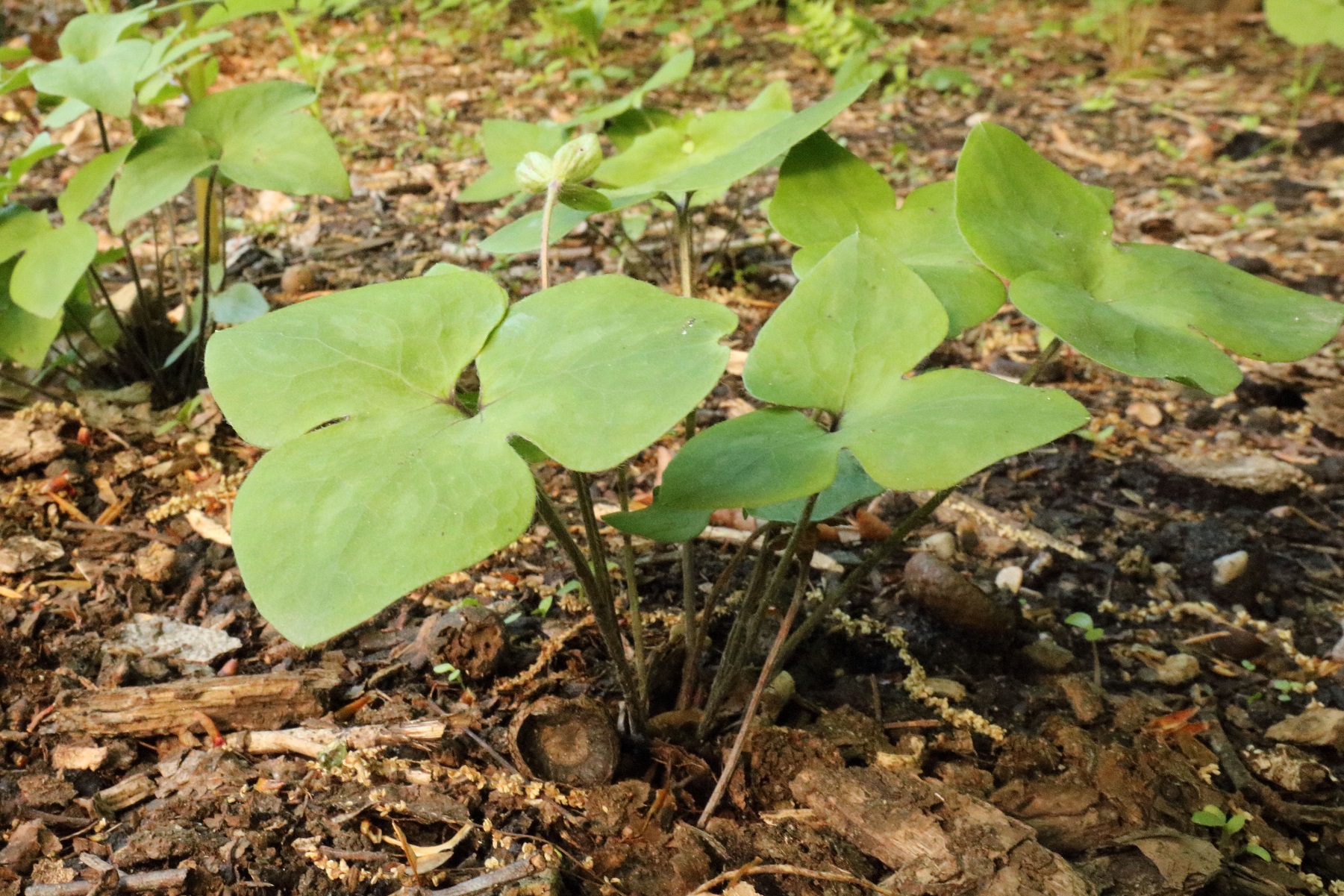
(Sharp-Lobed Hepatica)
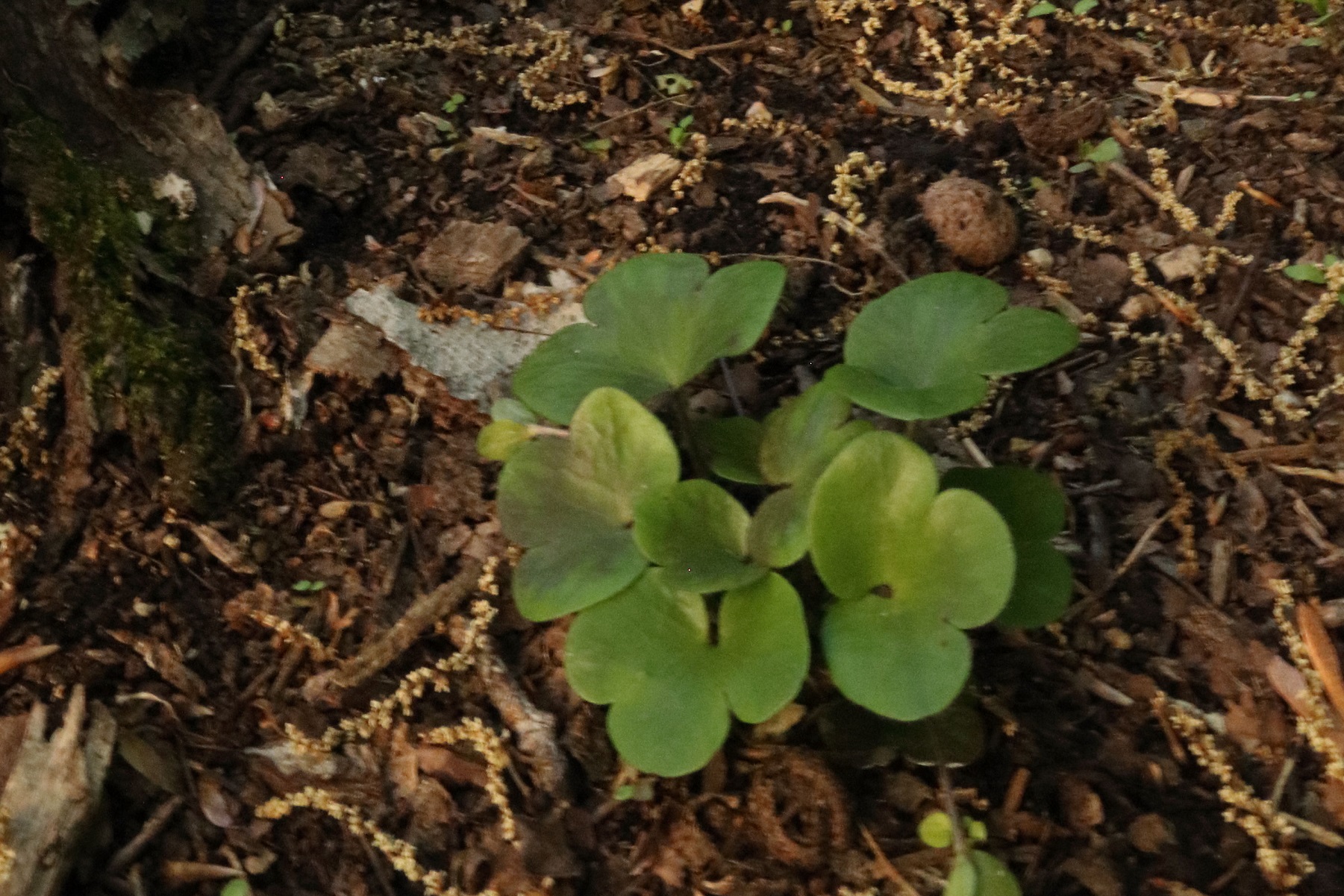
(Round-Lobed Hepatica)
If we had to name a single favorite Spring Ephemeral, it would be Bloodroot (see the image at the top of the section). Bloodroot exhibits a beautiful big white flower with yellow center that lasts for a brief week, but the real stunner, which makes it so garden worthy, is its single leaf. Before and during flowering, the leaf folds around the flower stem as if the bloodroot was wearing a coat. Once flowering is done, the leaf opens and shows it’s unique deeply lobed shape. The leaf keeps growing bigger as the season progresses, eventually reaching the size of an adult hand before going dormant. When propagated by cutting up the rhizomes, the bloody sap giving the plant its name can be appreciated.
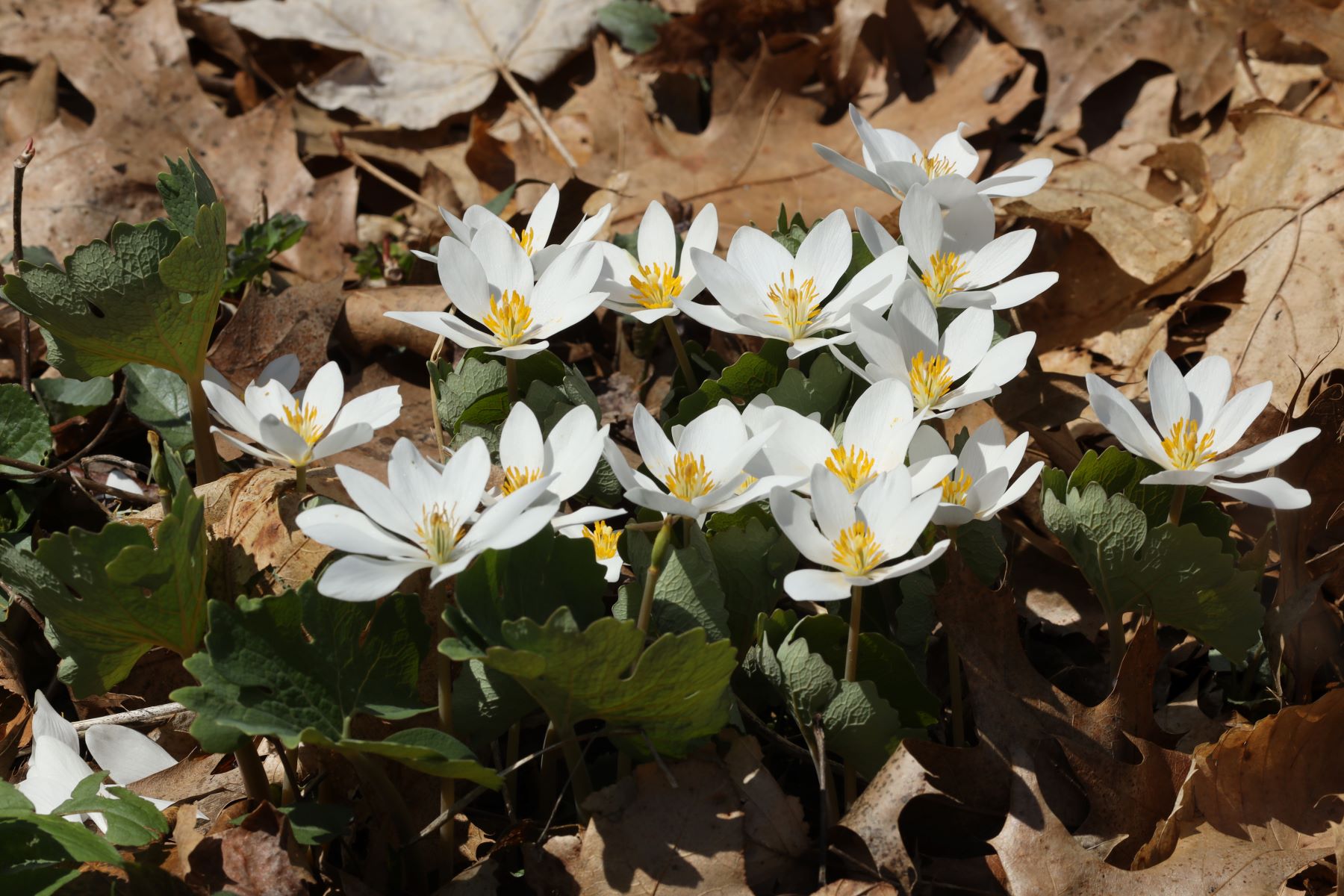
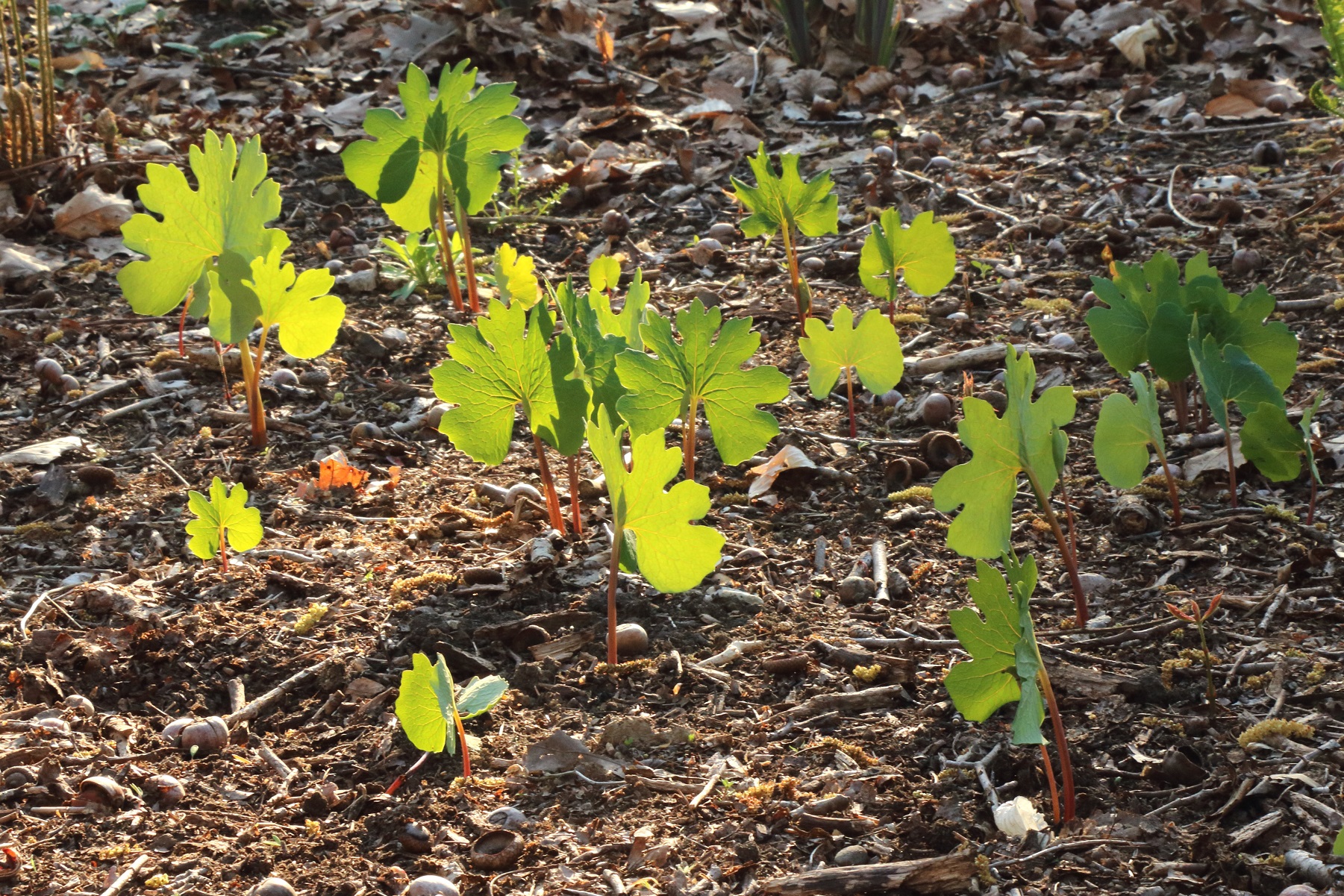
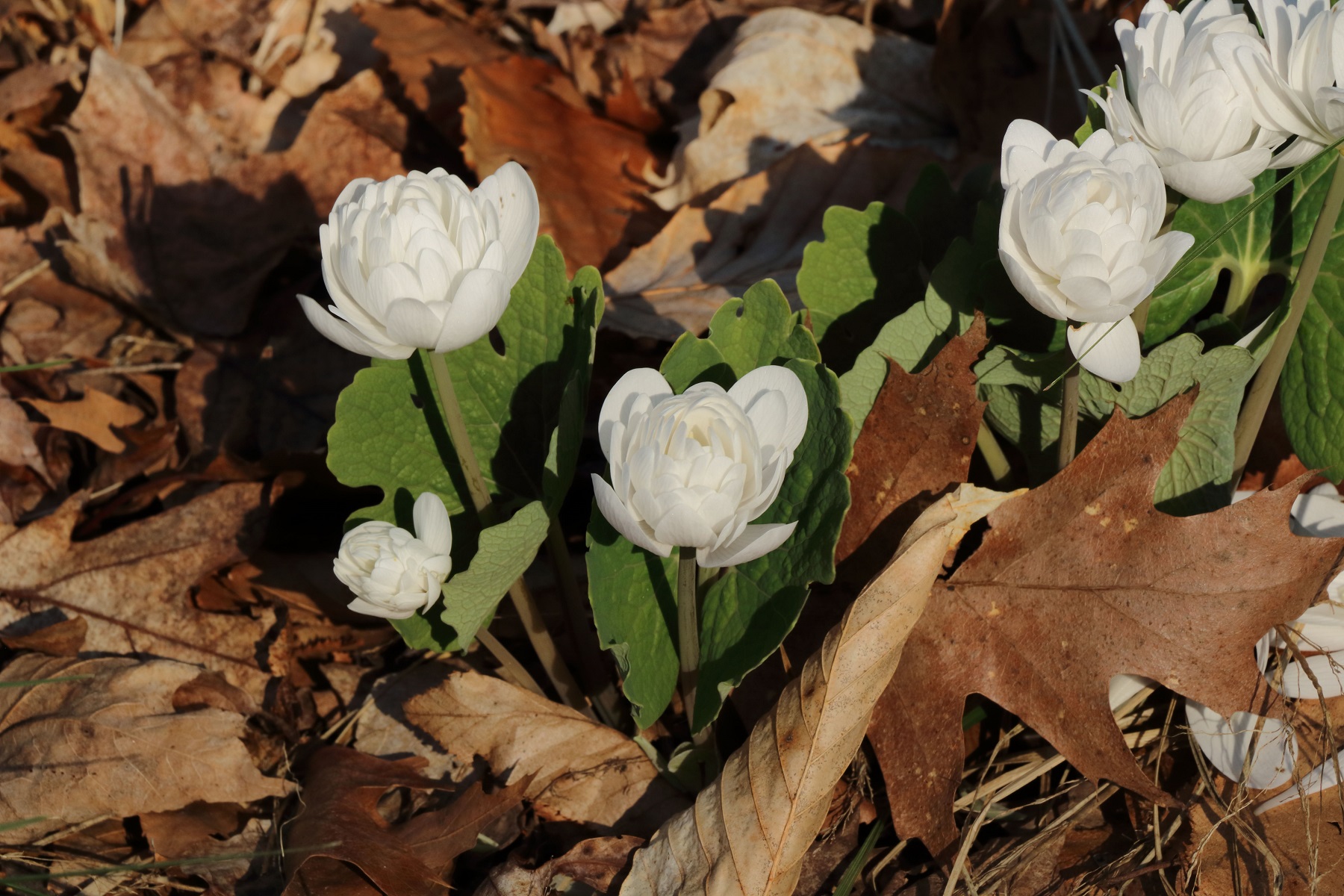
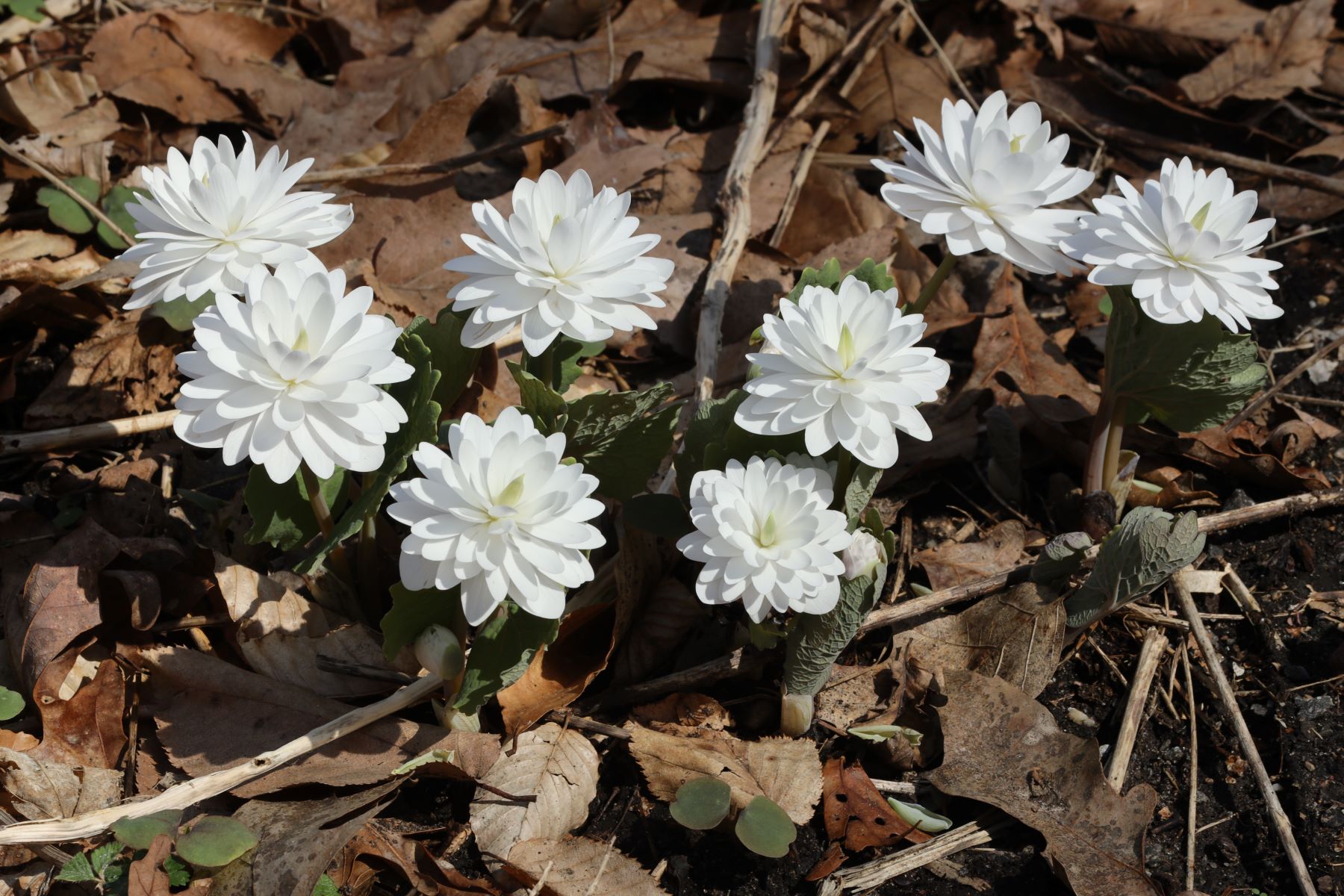
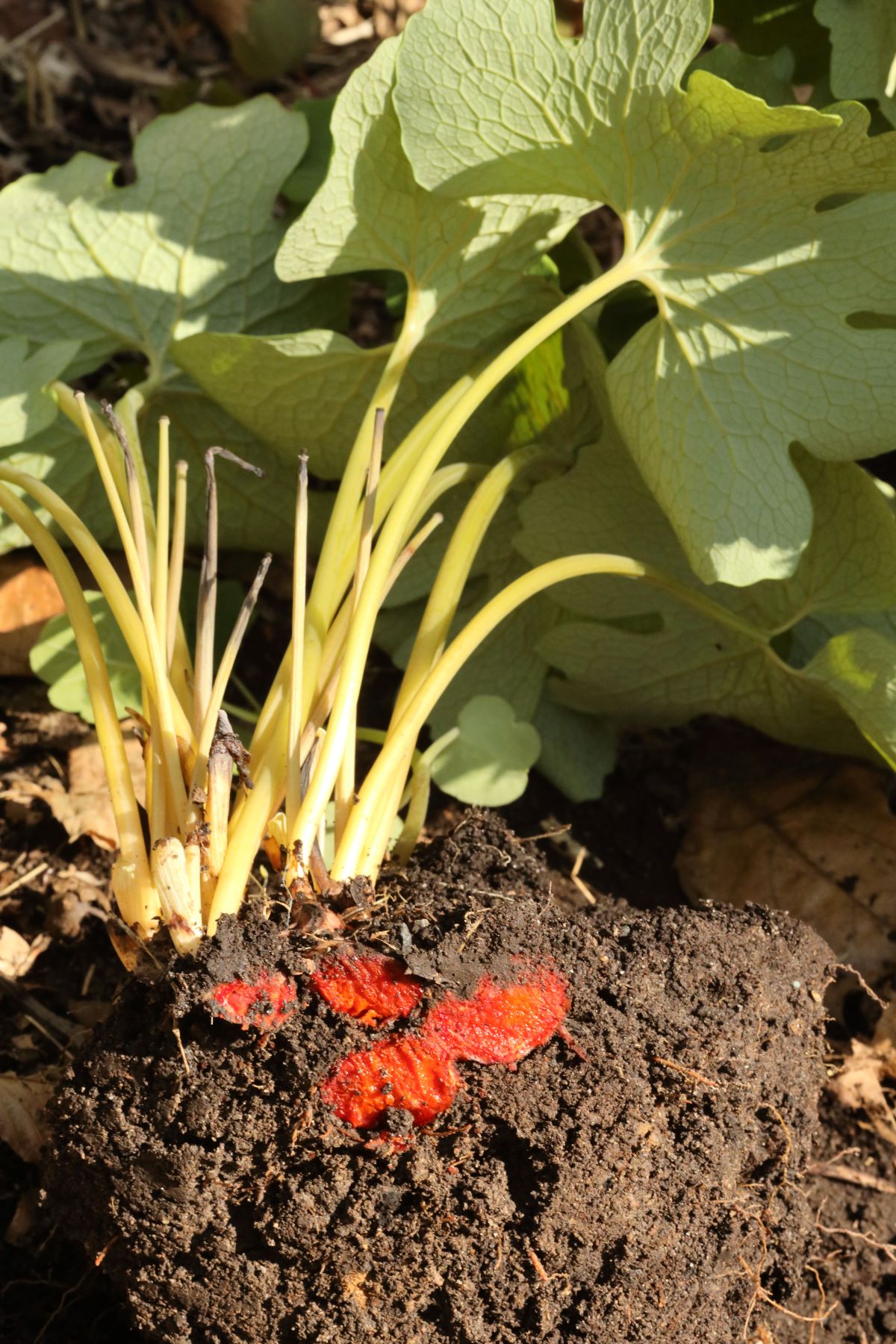
Twinleaf or Jeffersonia (after the third president and author of the Declaration of Independence, who cultivated them at his home in Monticello), has a habit very similar to Bloodroot. It’s flowers are even more ephemeral, lasting a single day, and it’s outstanding leaves have two deeply divided lobes, thus “twin”leaf. We admire two aspects of this plant: The way it emerges from the ground in early spring, and the way the huge seed-pods are displayed above the showy big leaves in late spring and early summer. Leaves may linger into the fall.
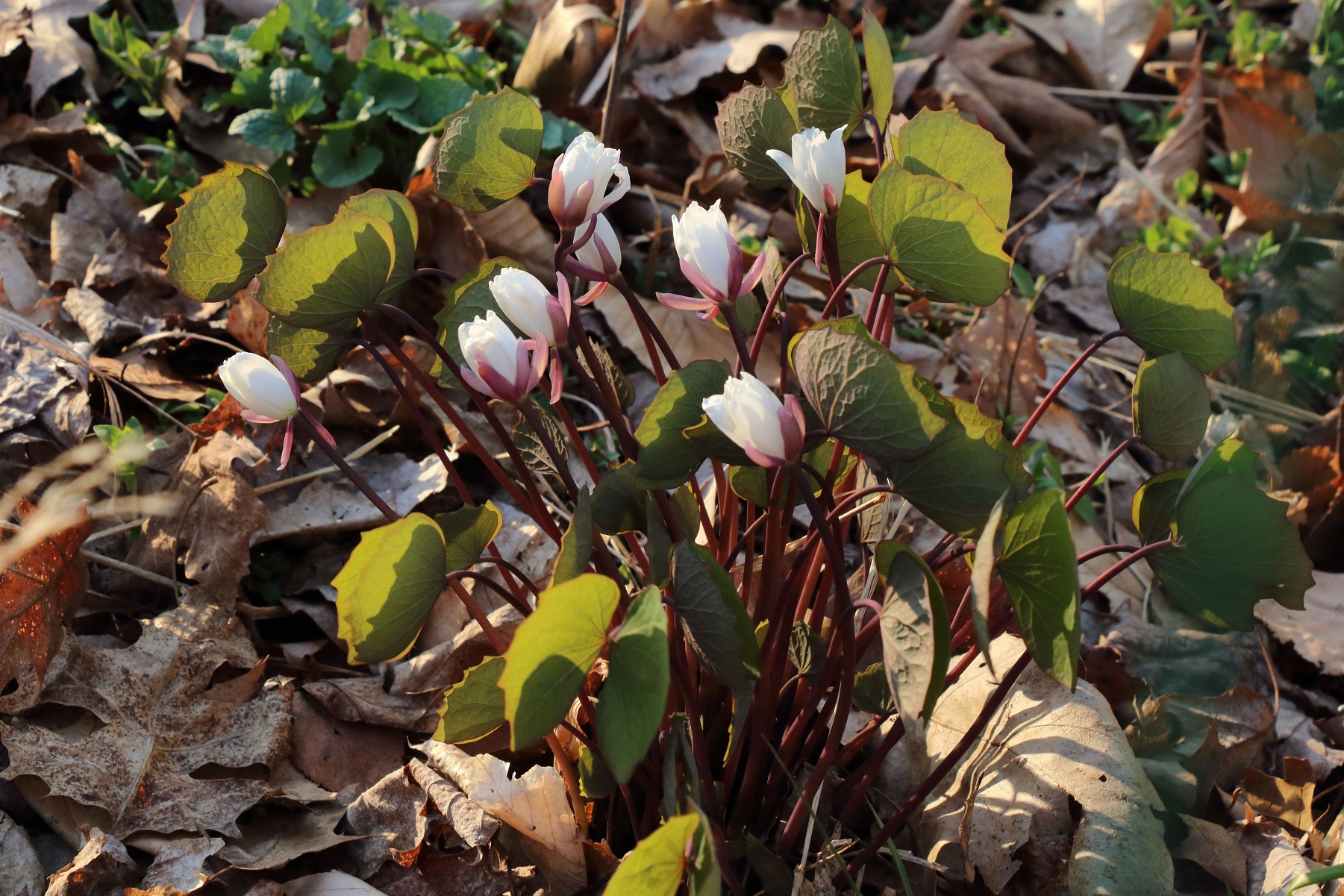
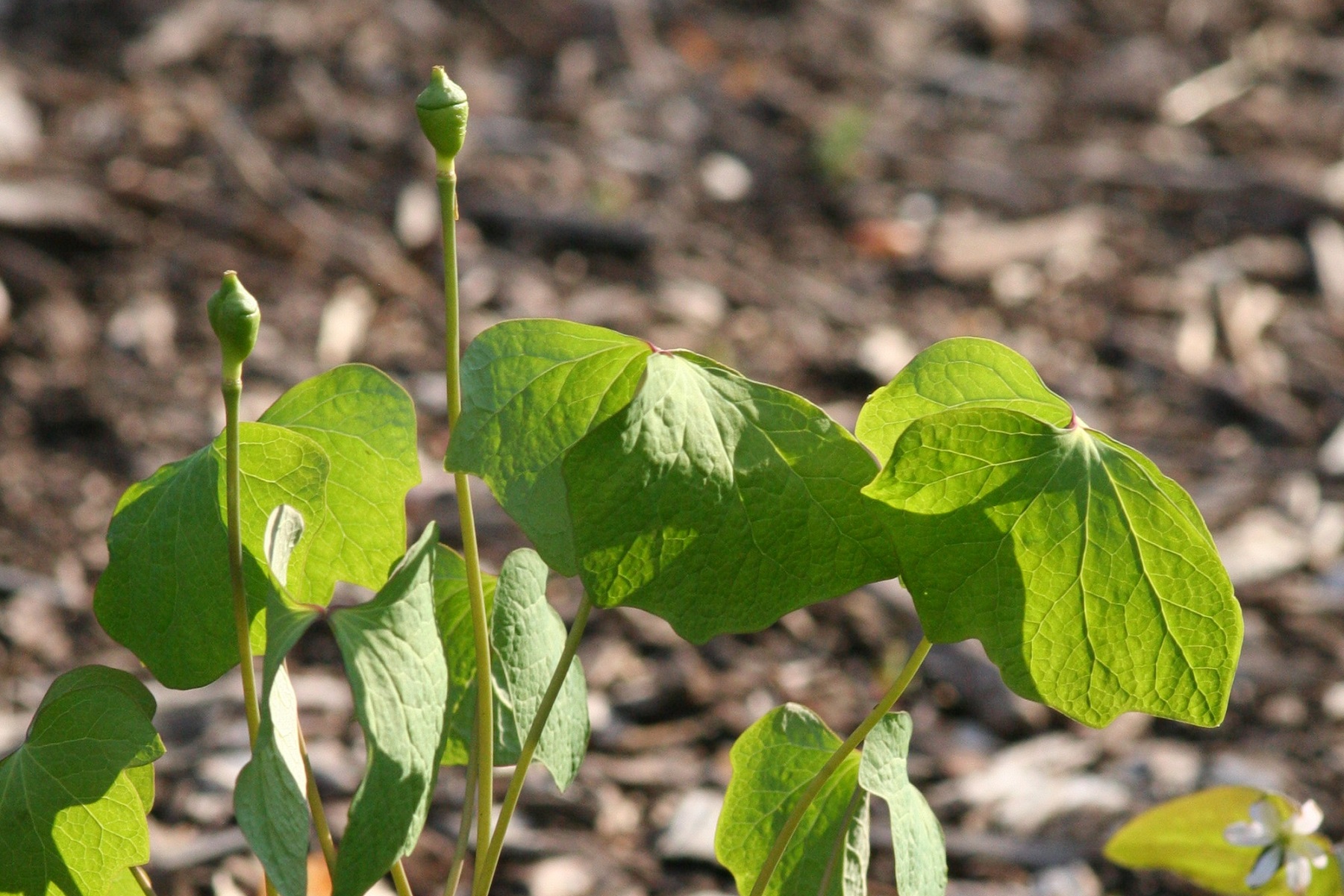
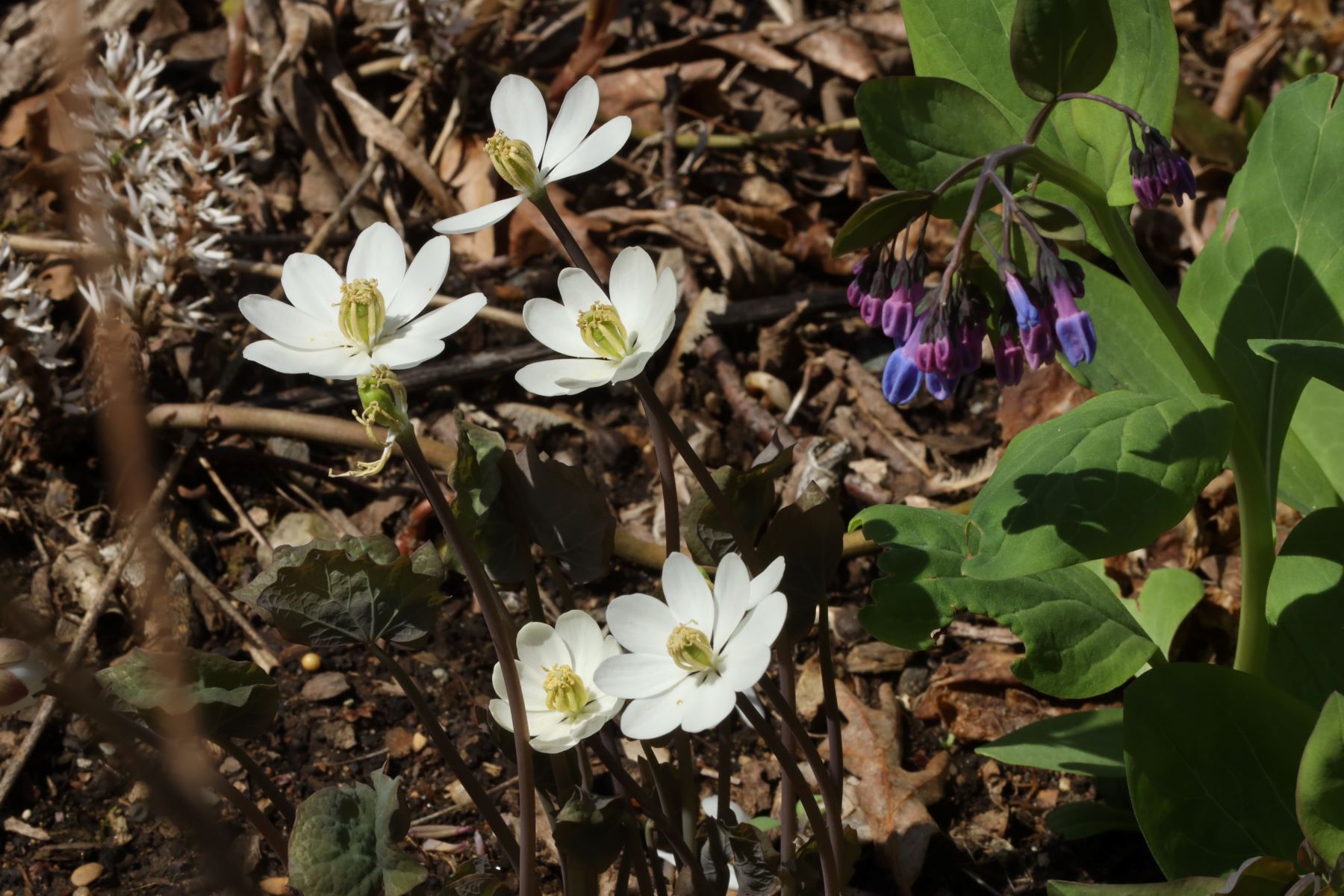
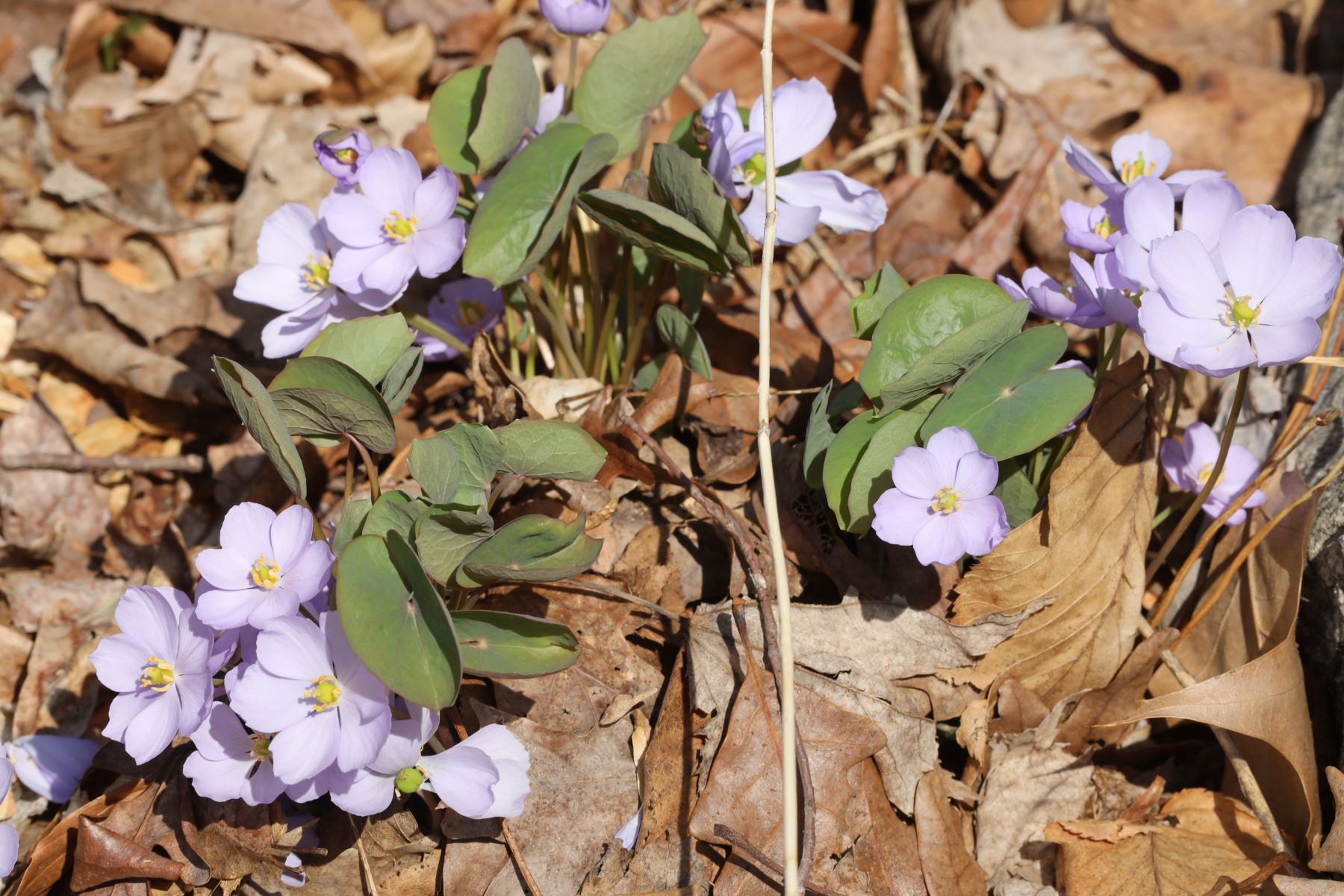
Trilliums may be the quintessential Spring Ephemerals. There are 39 native Trillium species in the USA (35 of them in the east) and they display all kinds of colors and sizes. In nurseries they are often hard to come by because it takes up to 7 years from seed to flowering. In our garden White and Red Trillium are doing fine in an area where we planted them without much competition. White Trillium has the biggest flowers, Red Trillium’s flowers are nicely nodding, and Yellow Trillium sports interesting spotted leaves. We are also giving the tiny Dwarf Wakerobin and Sessile Trillium a try.
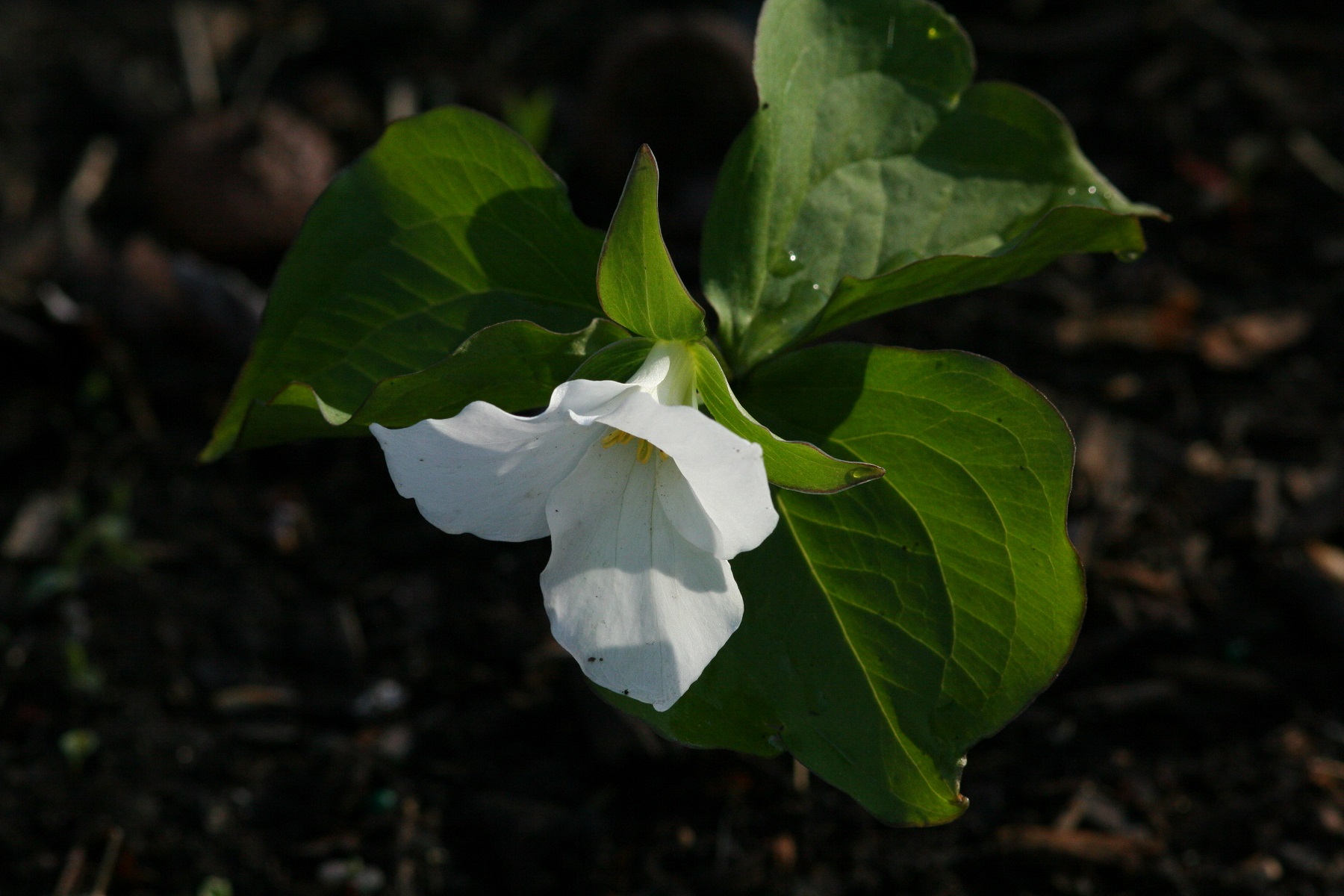
(White Trillium)
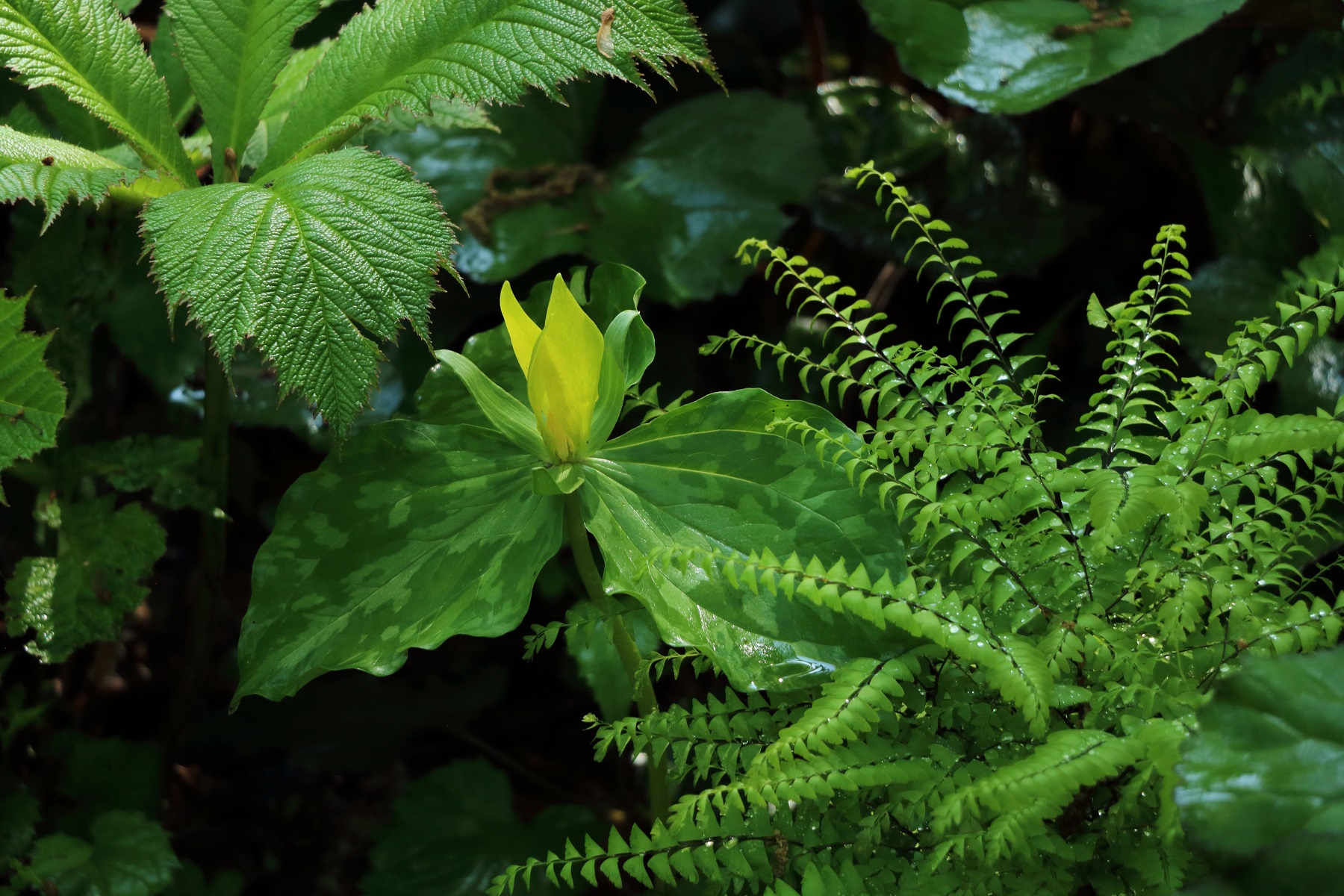
(Yellow Trillium)
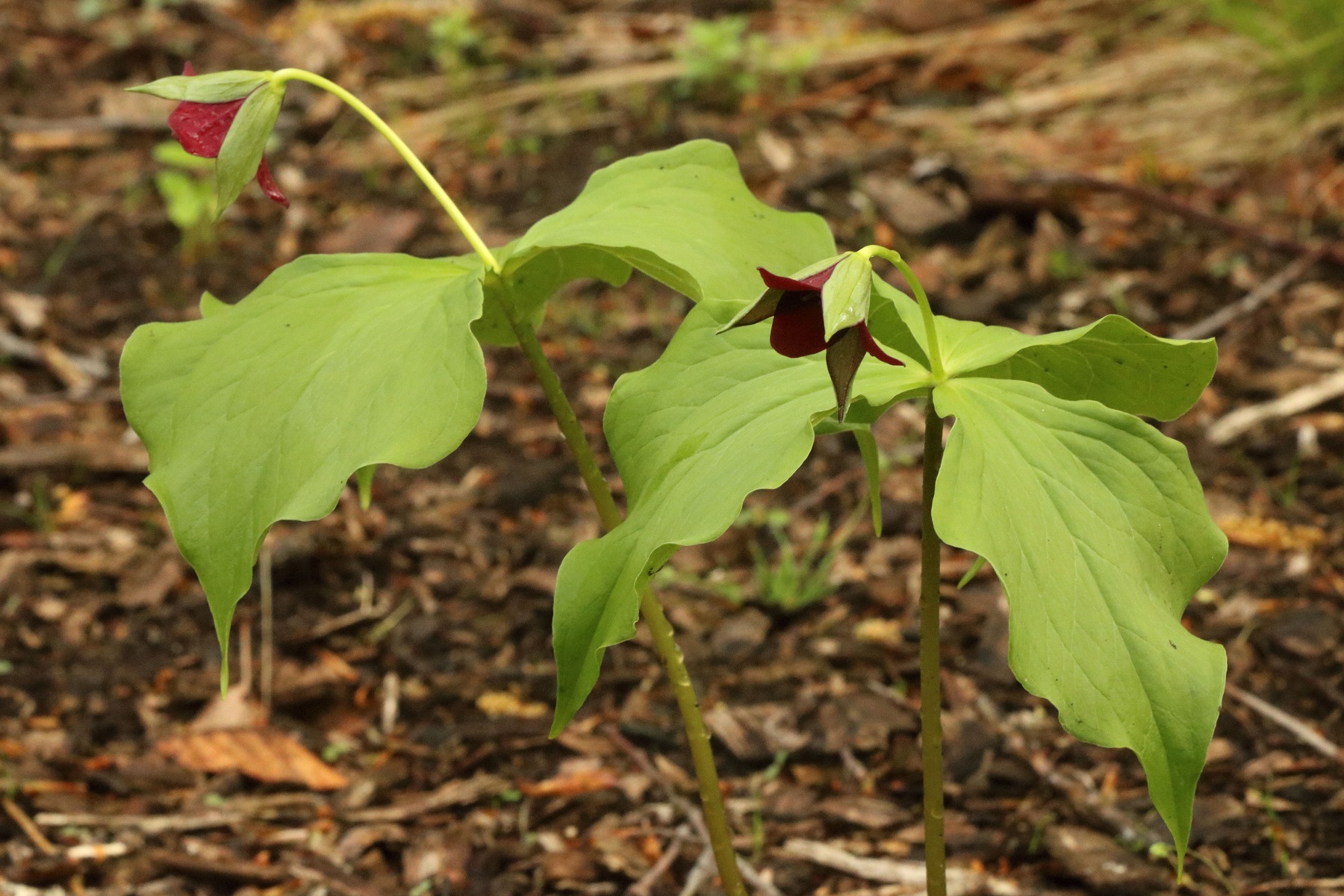
(Red Trillium or Wakerobin)
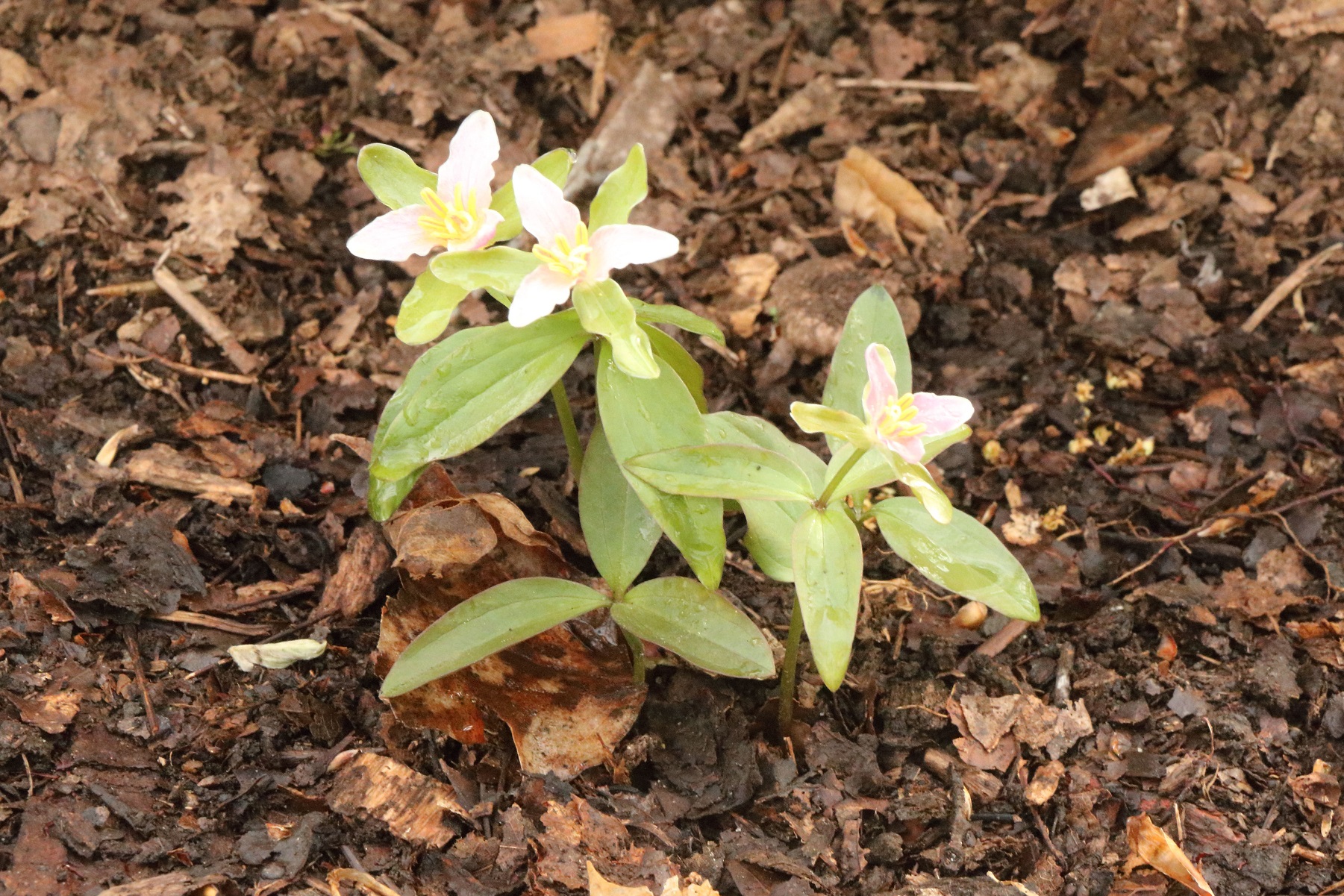
(Dwarf Wakerobin)
Bellwort
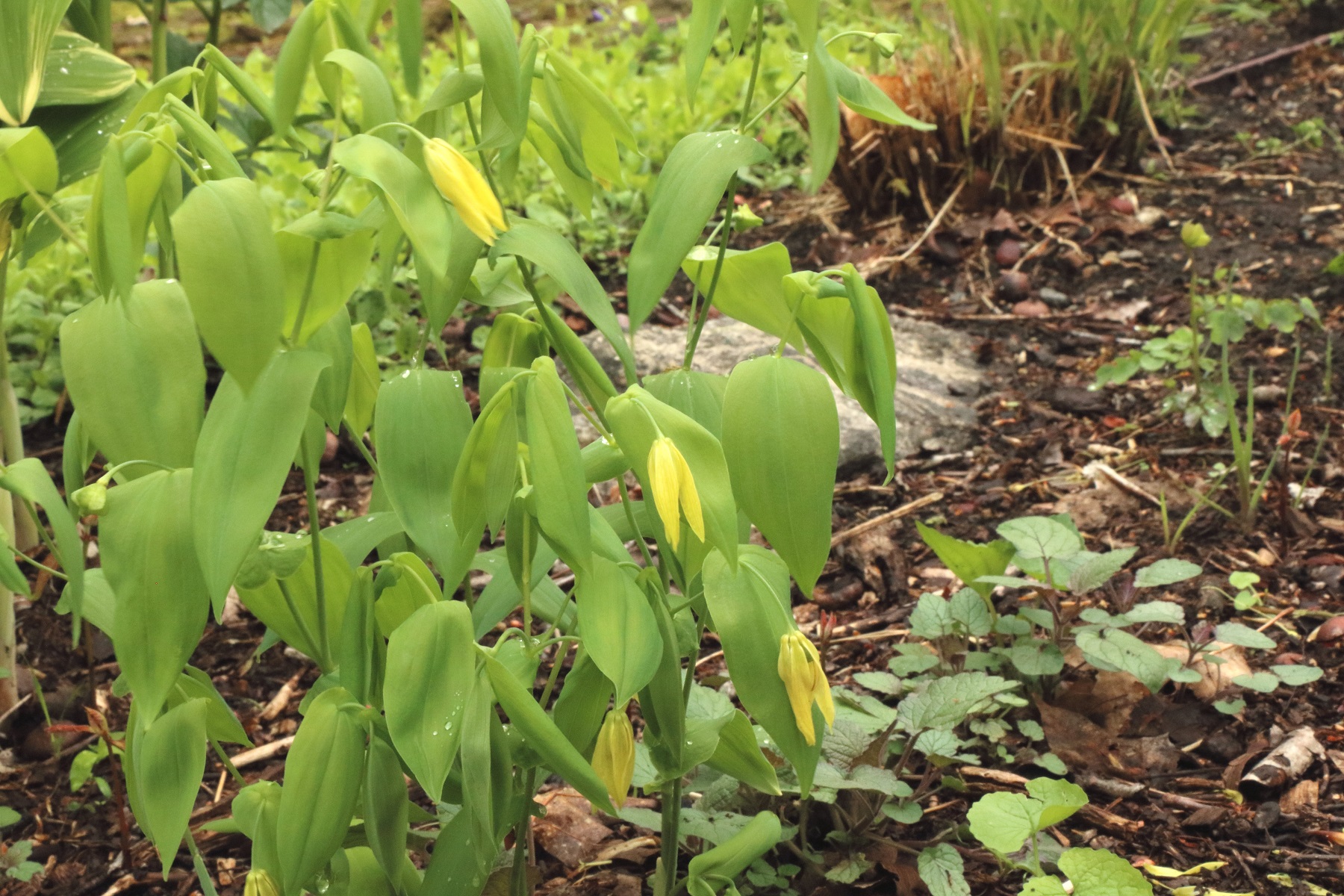
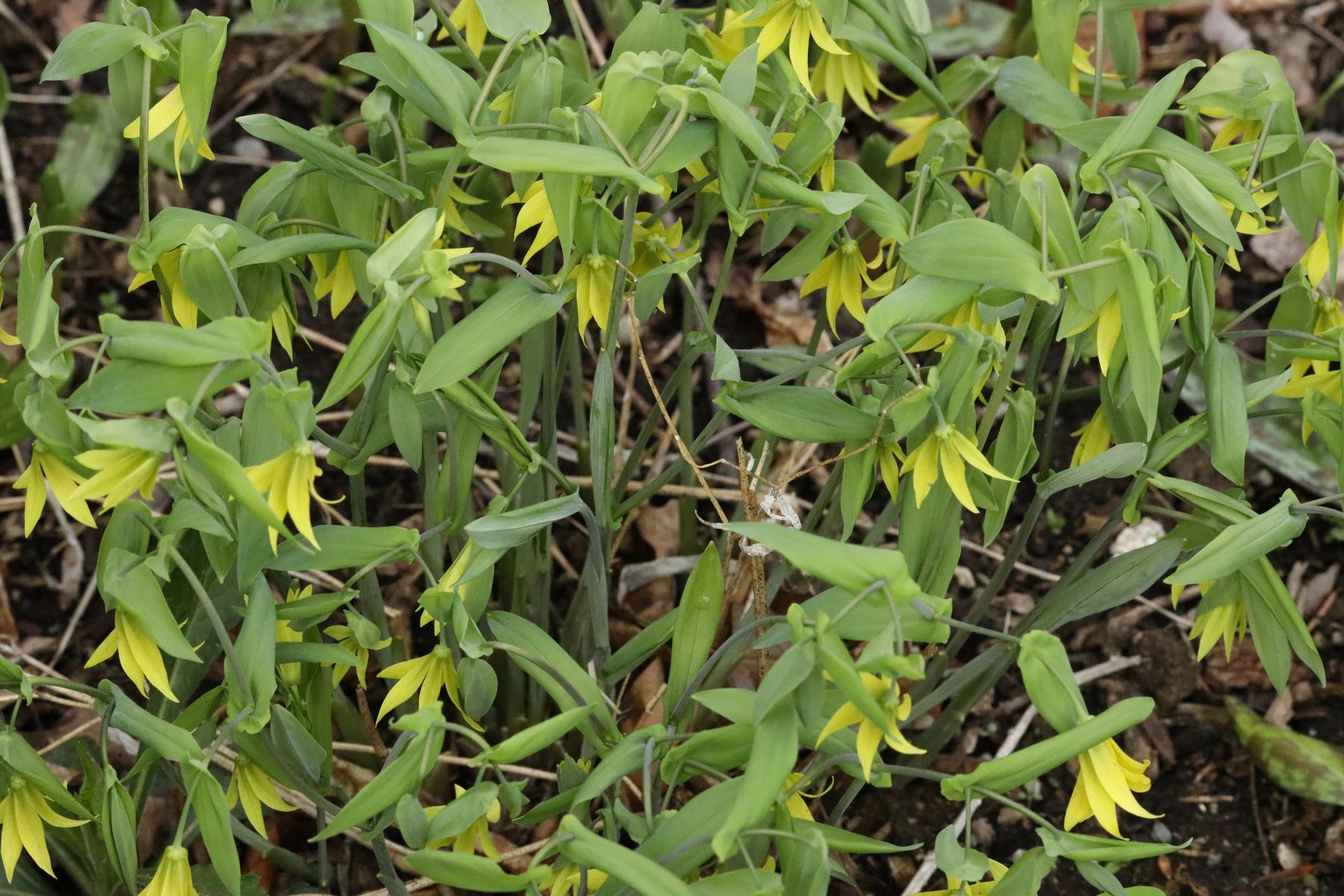
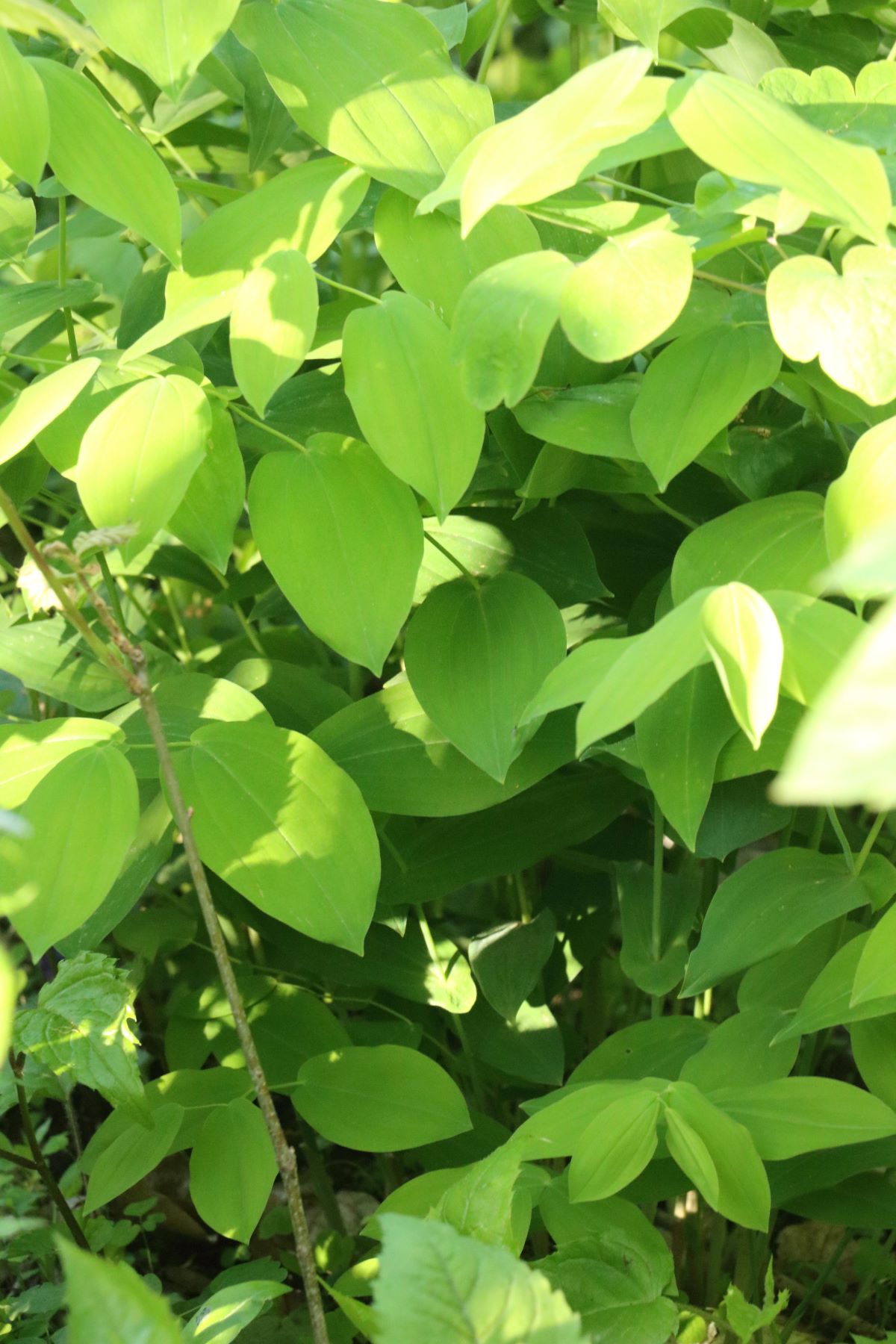
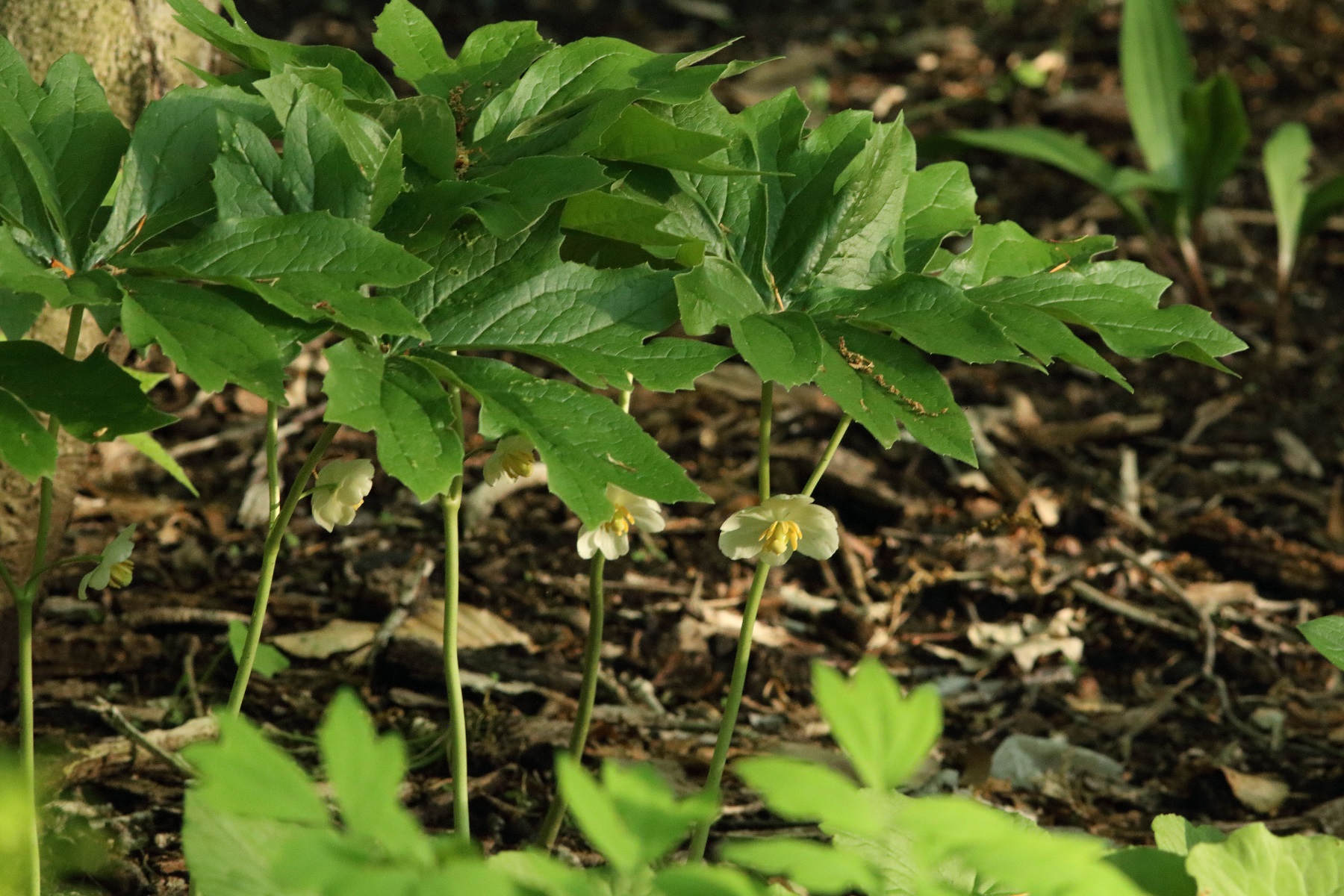
(Mayapple)
